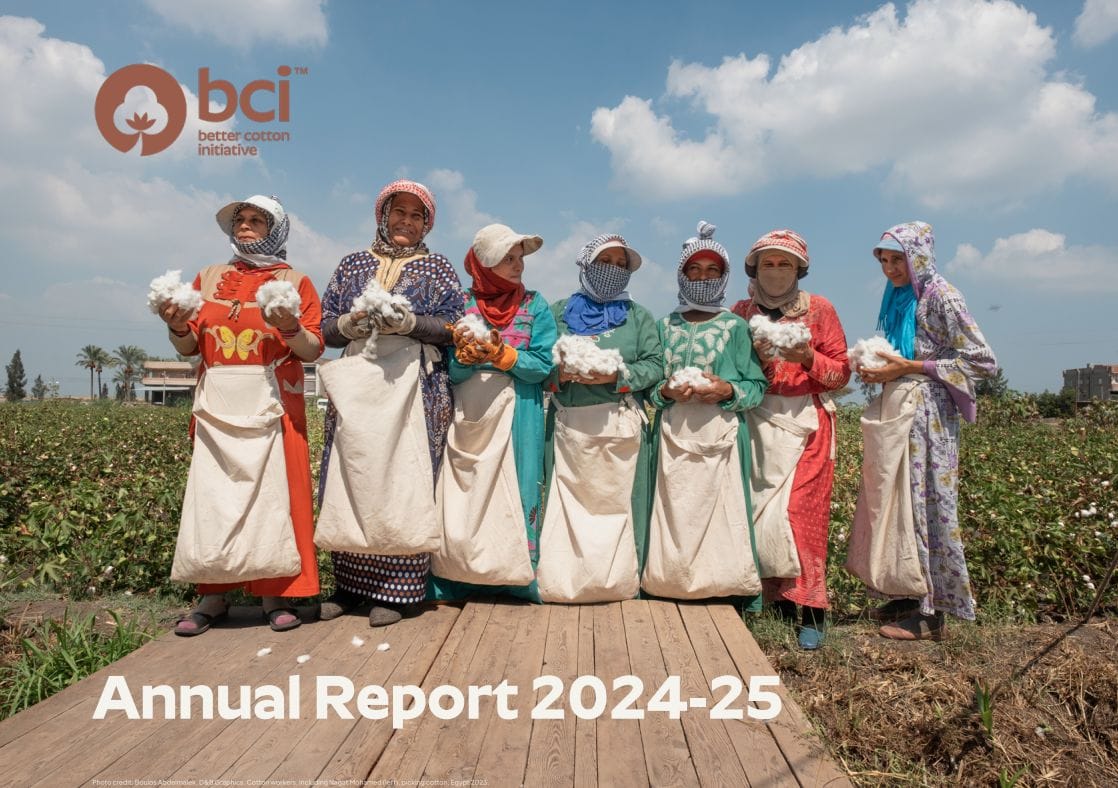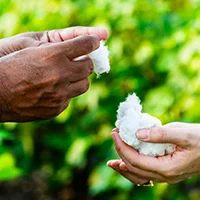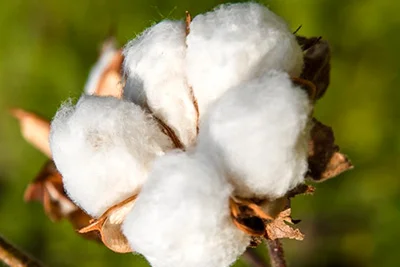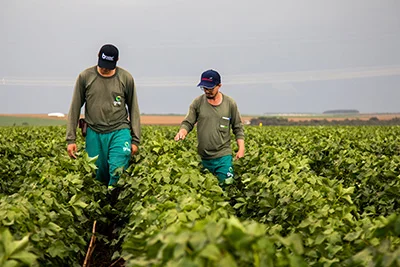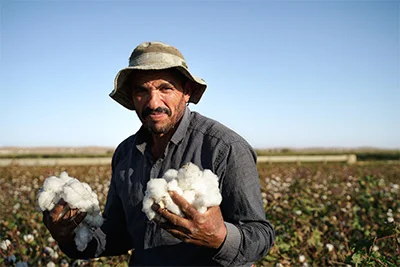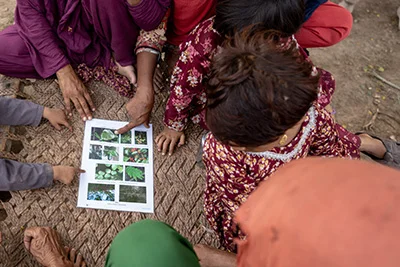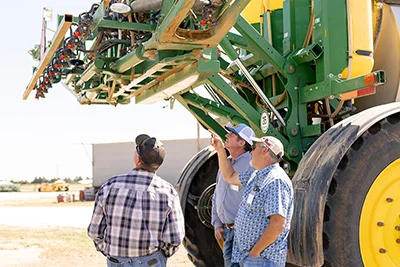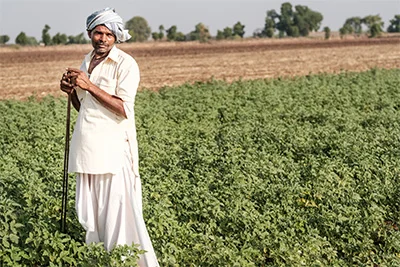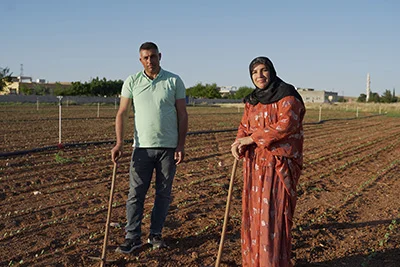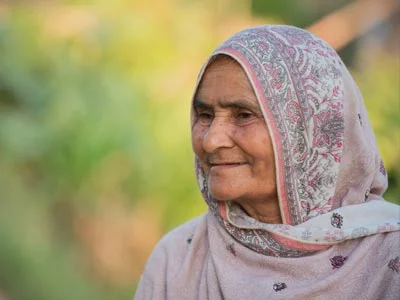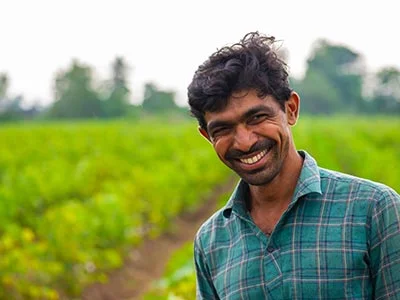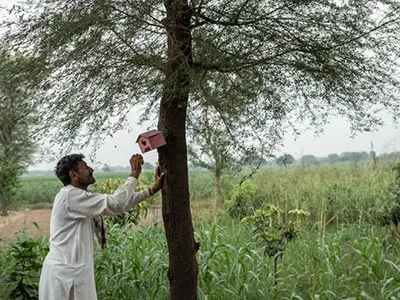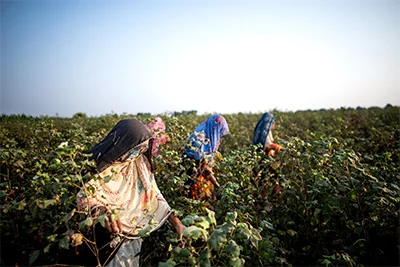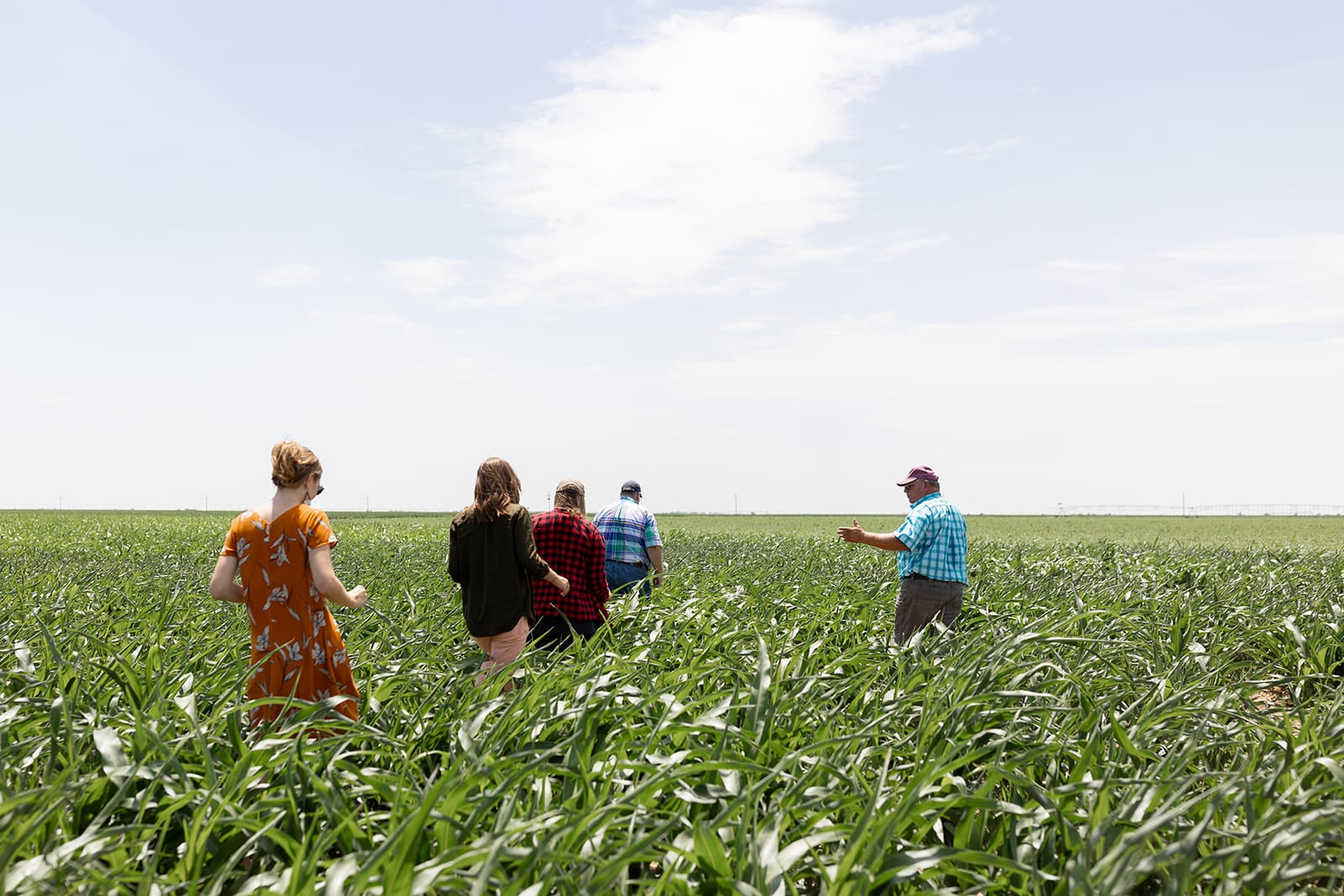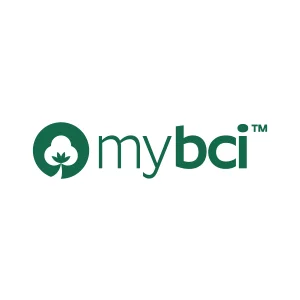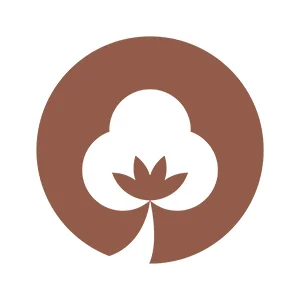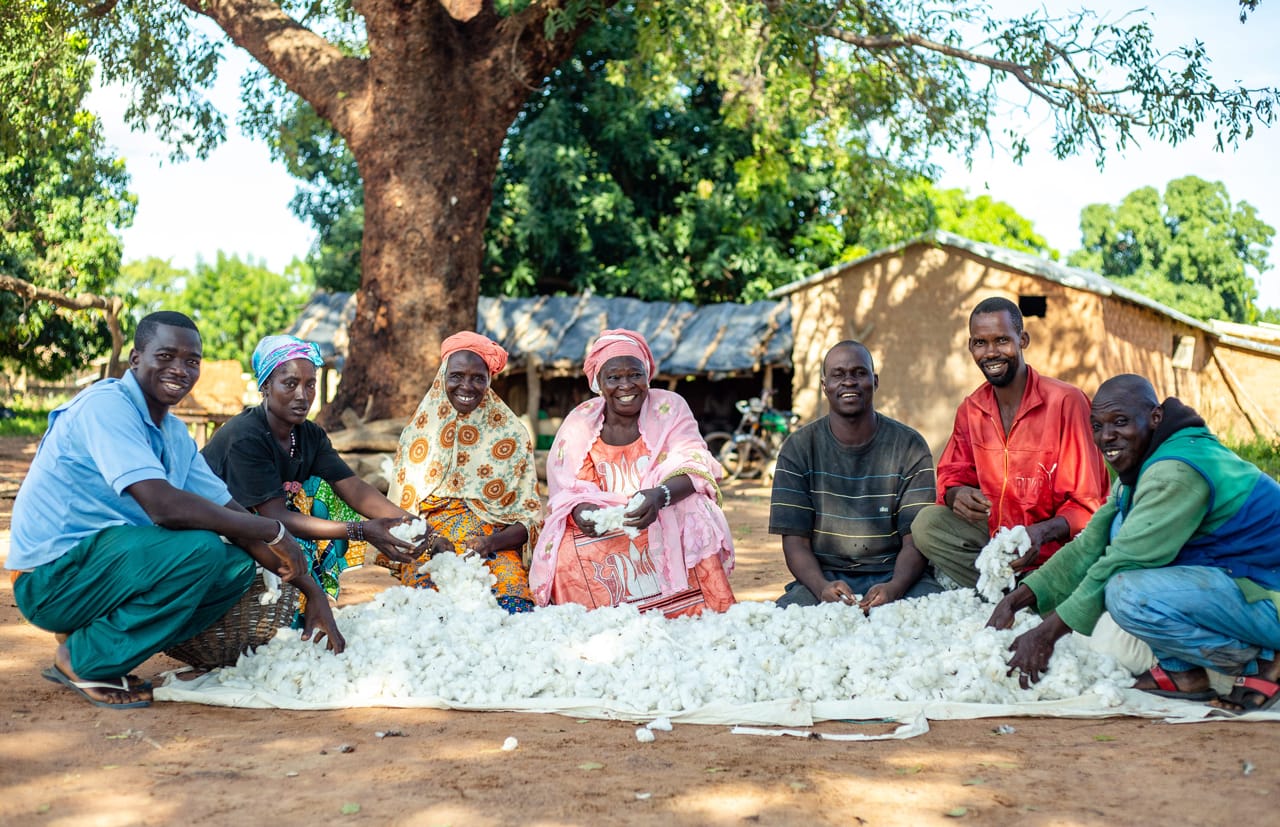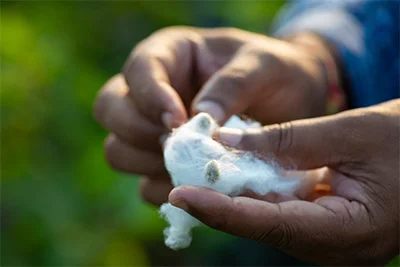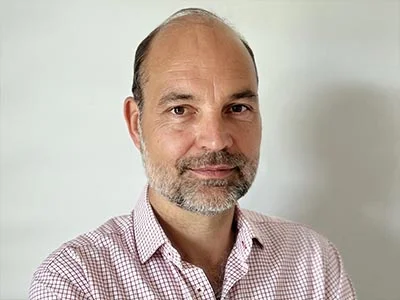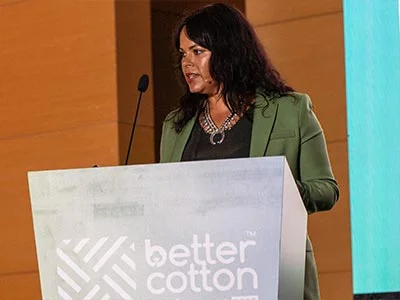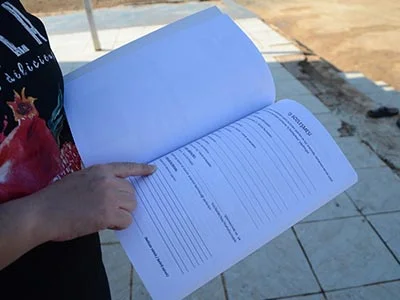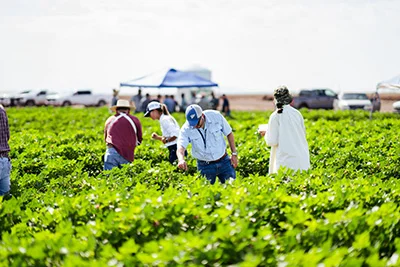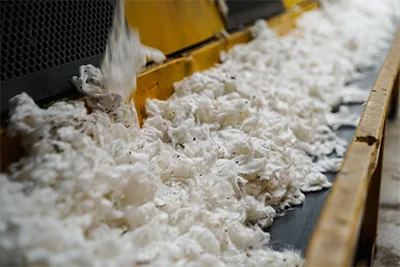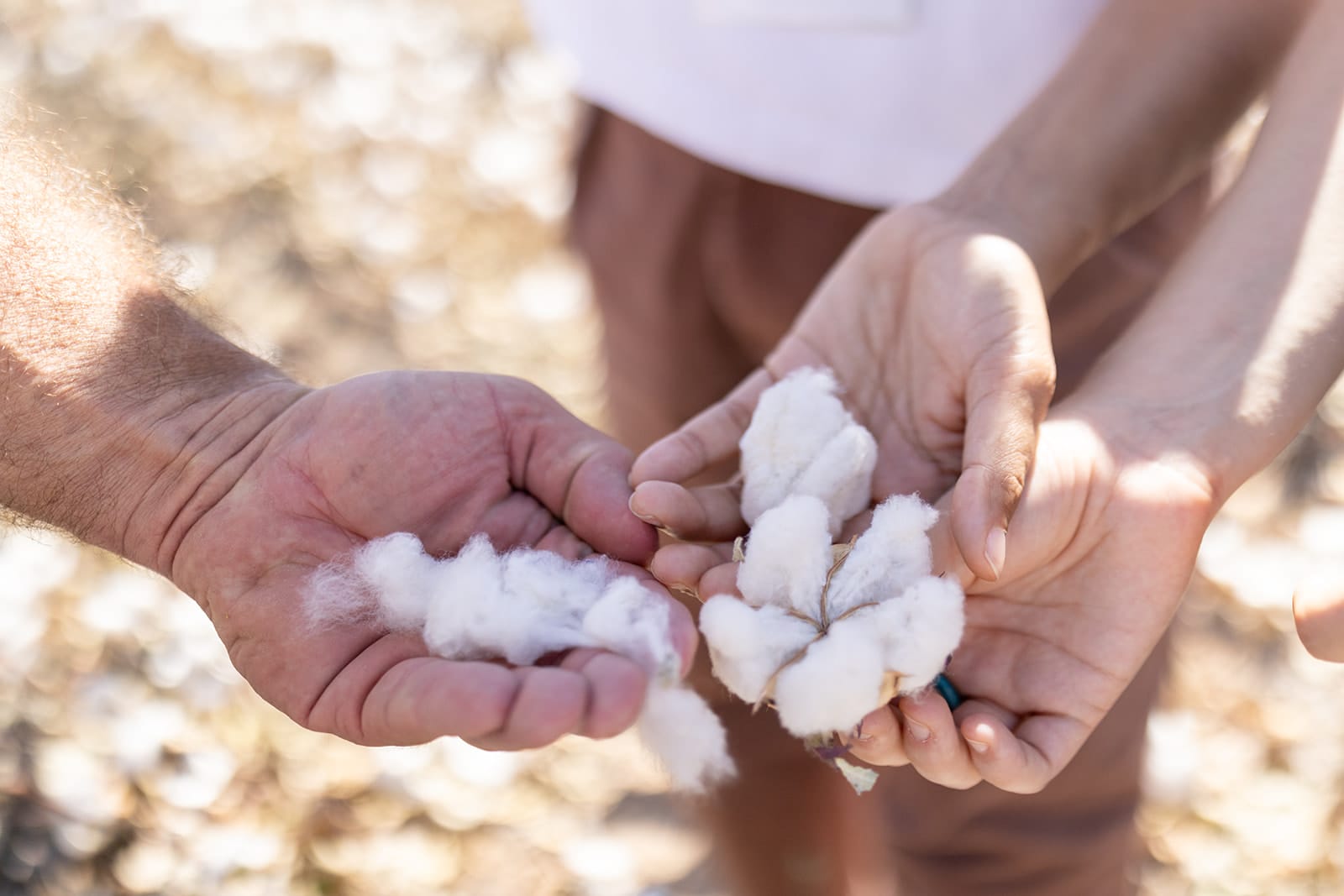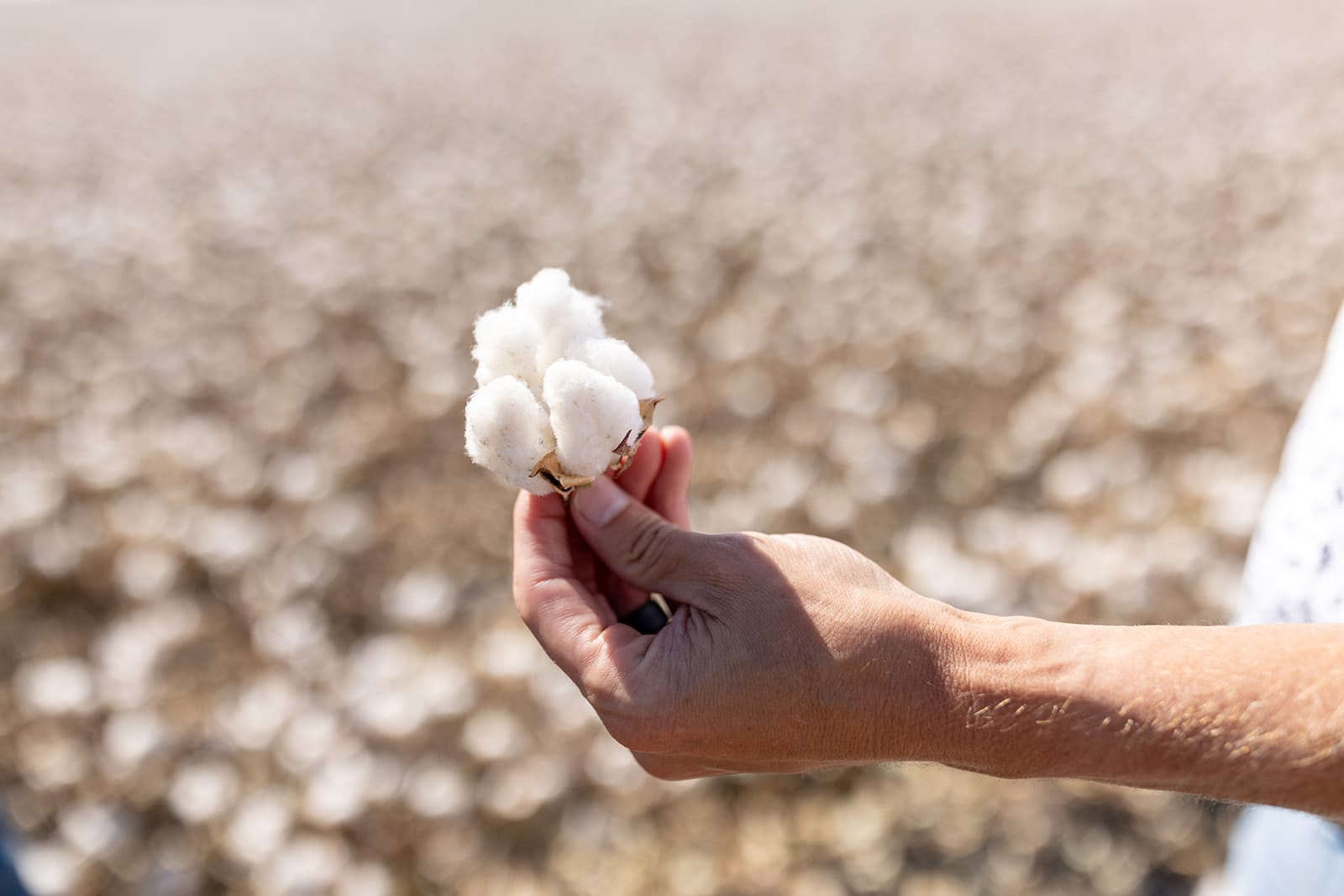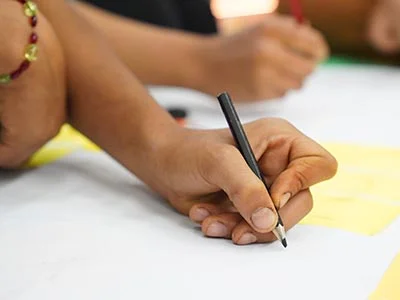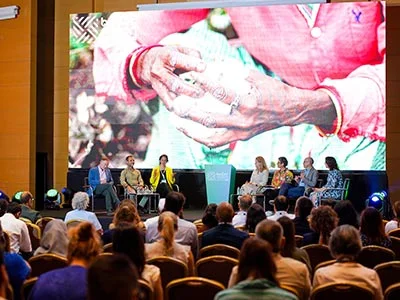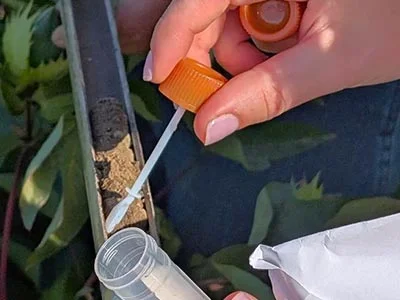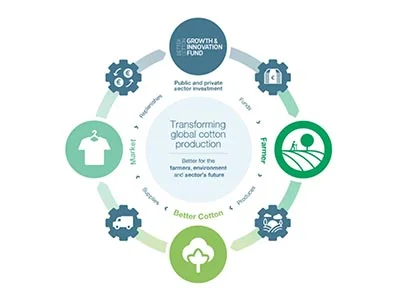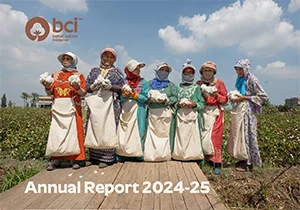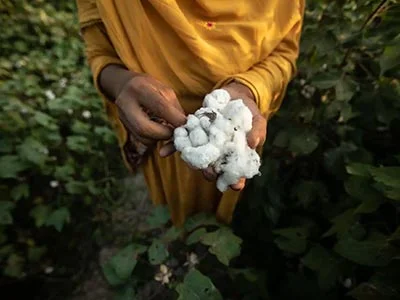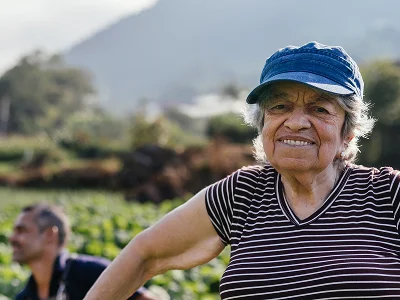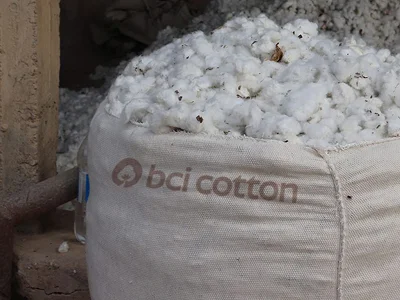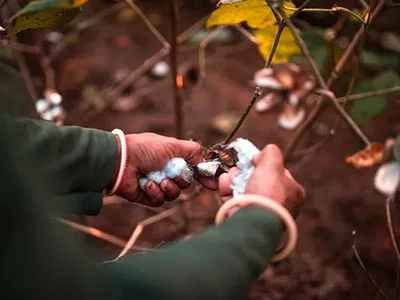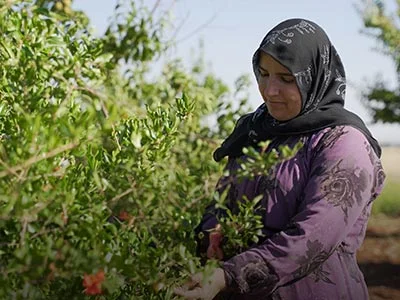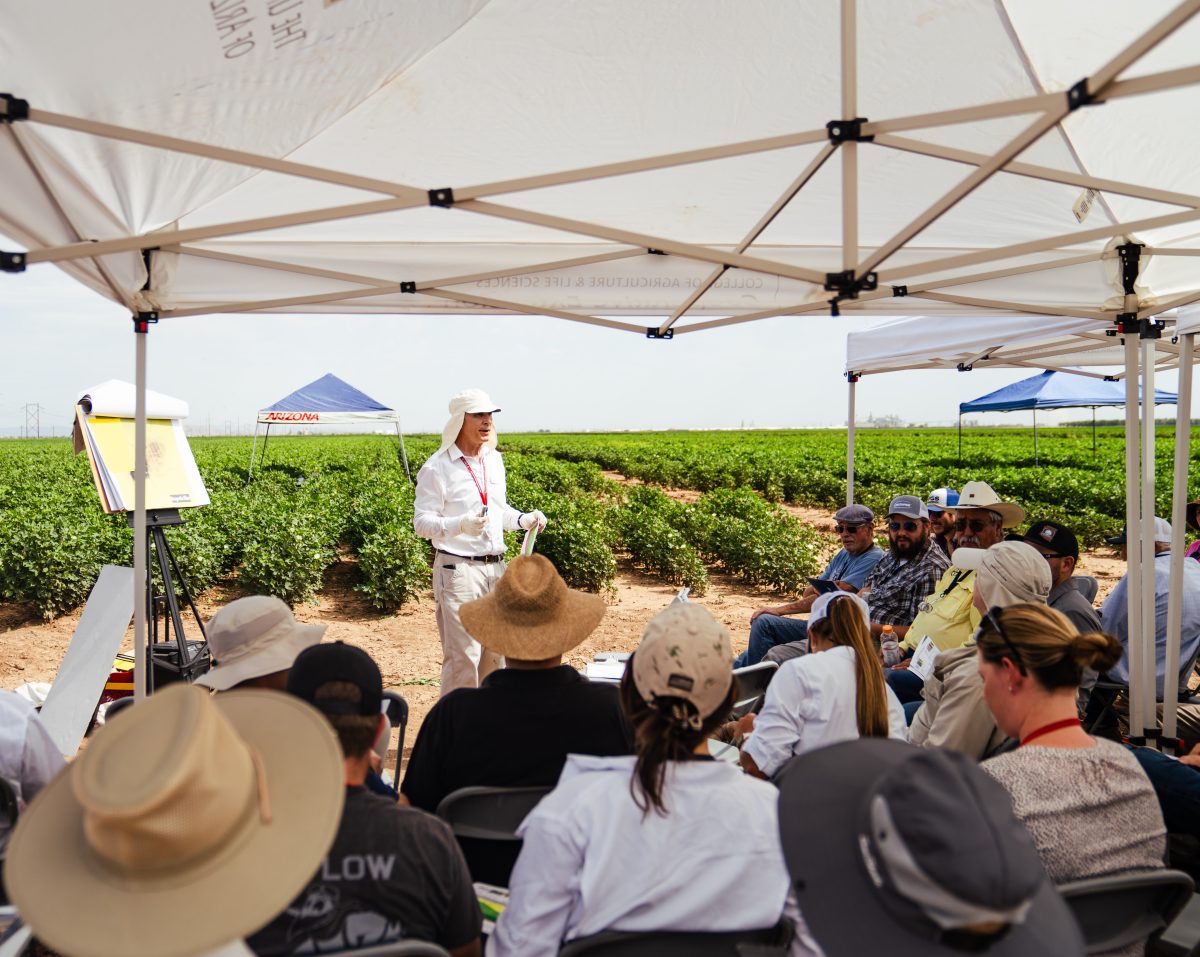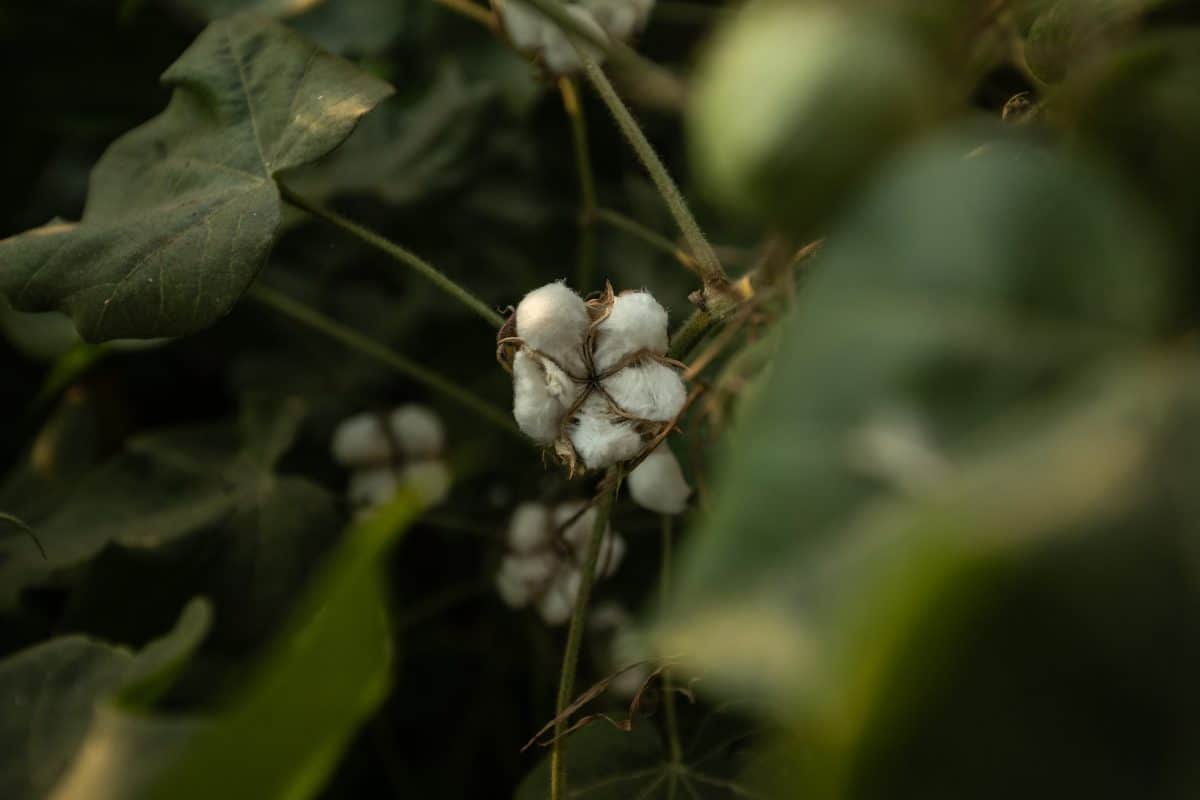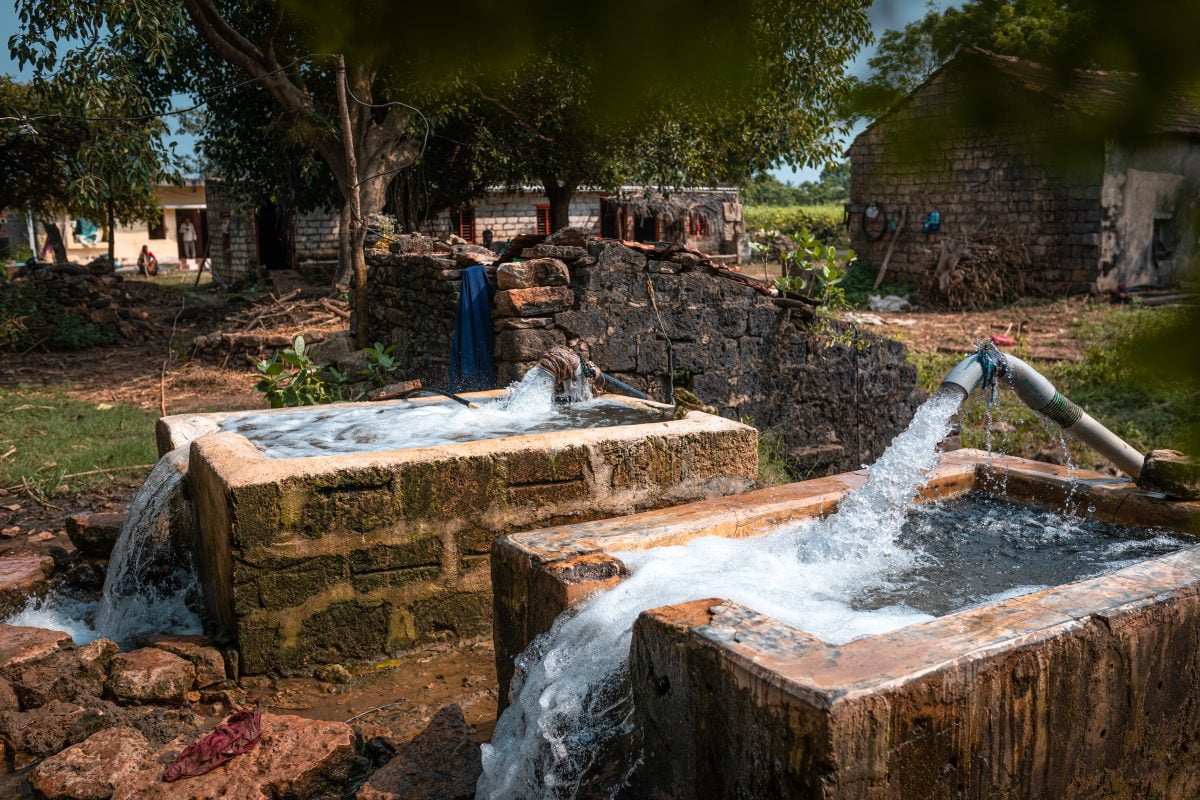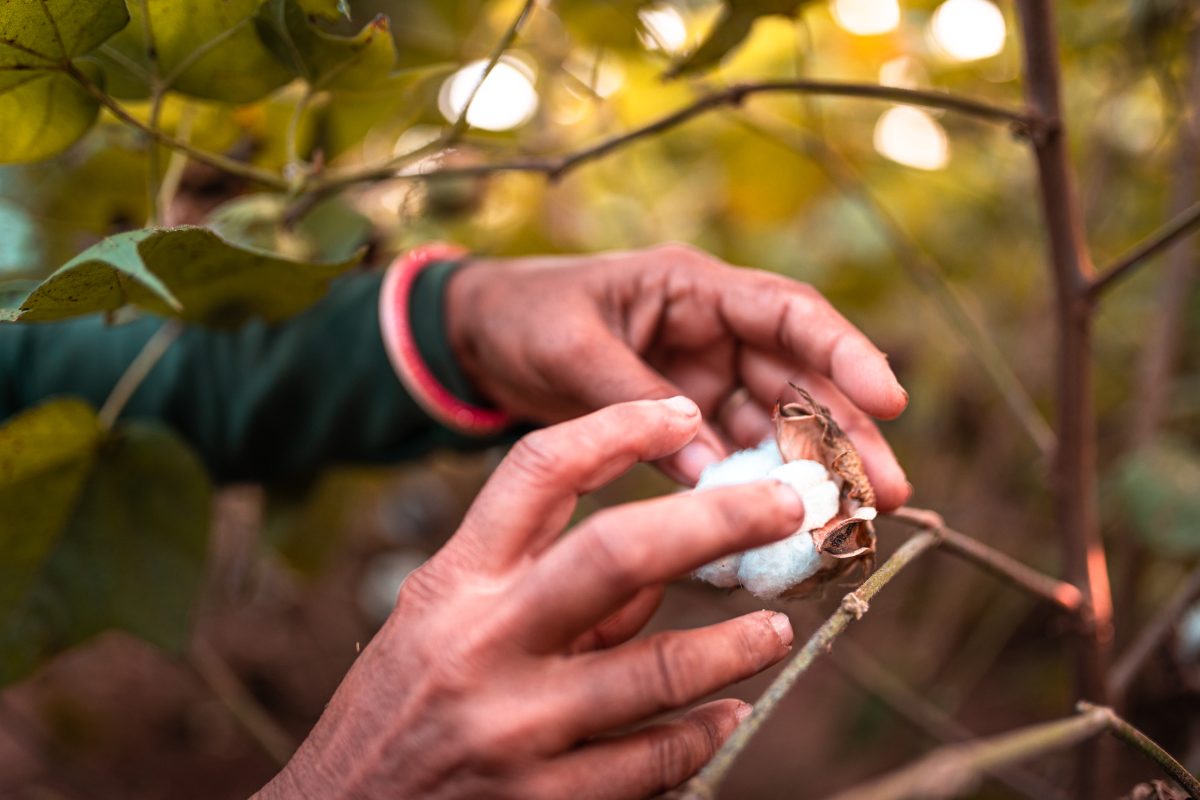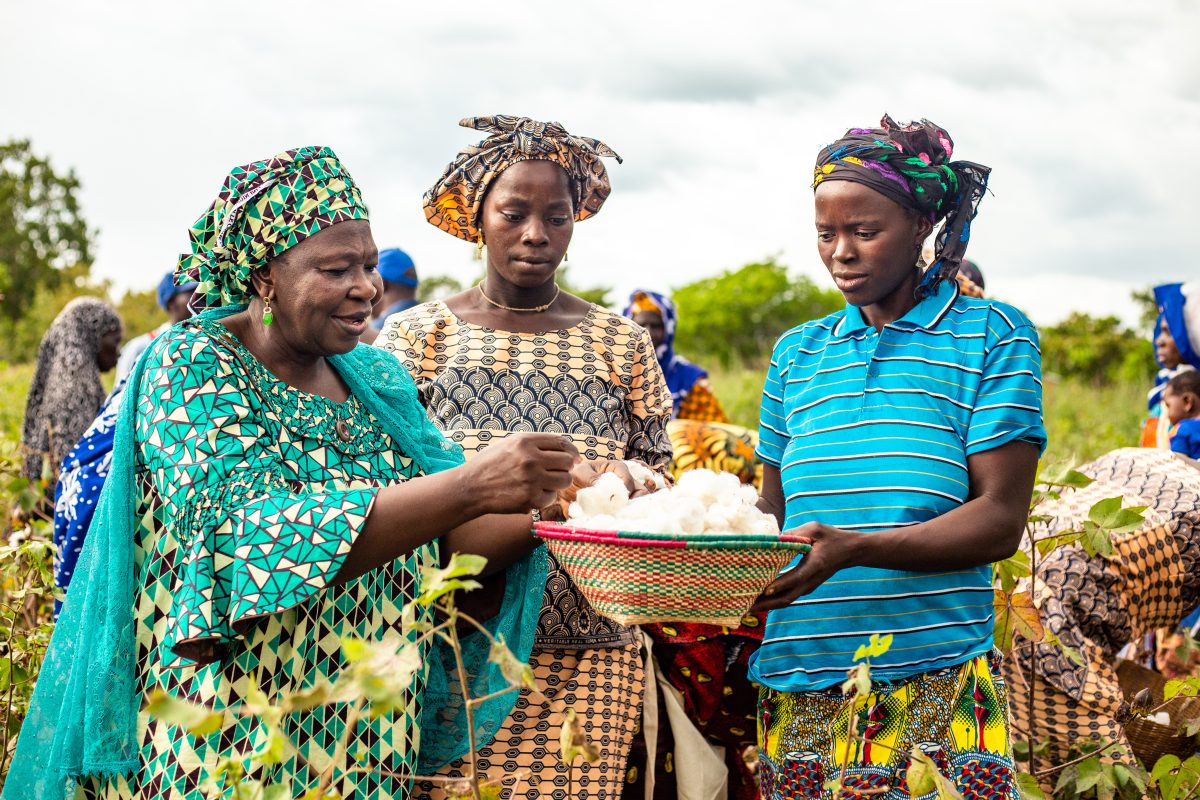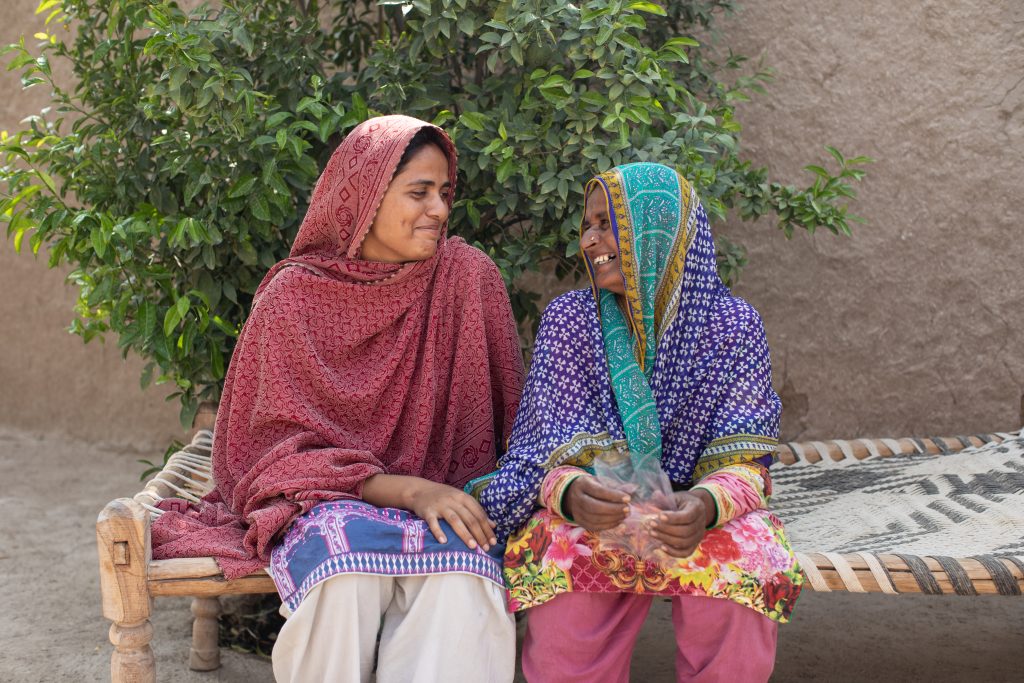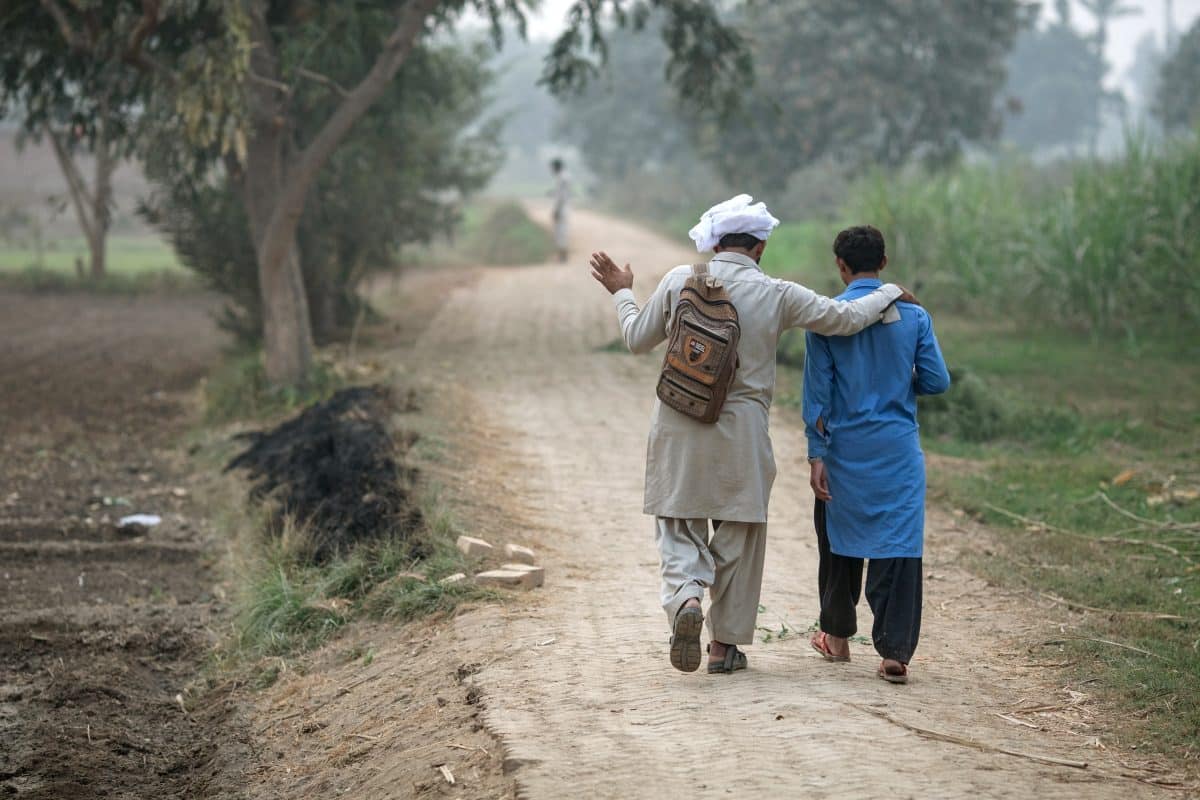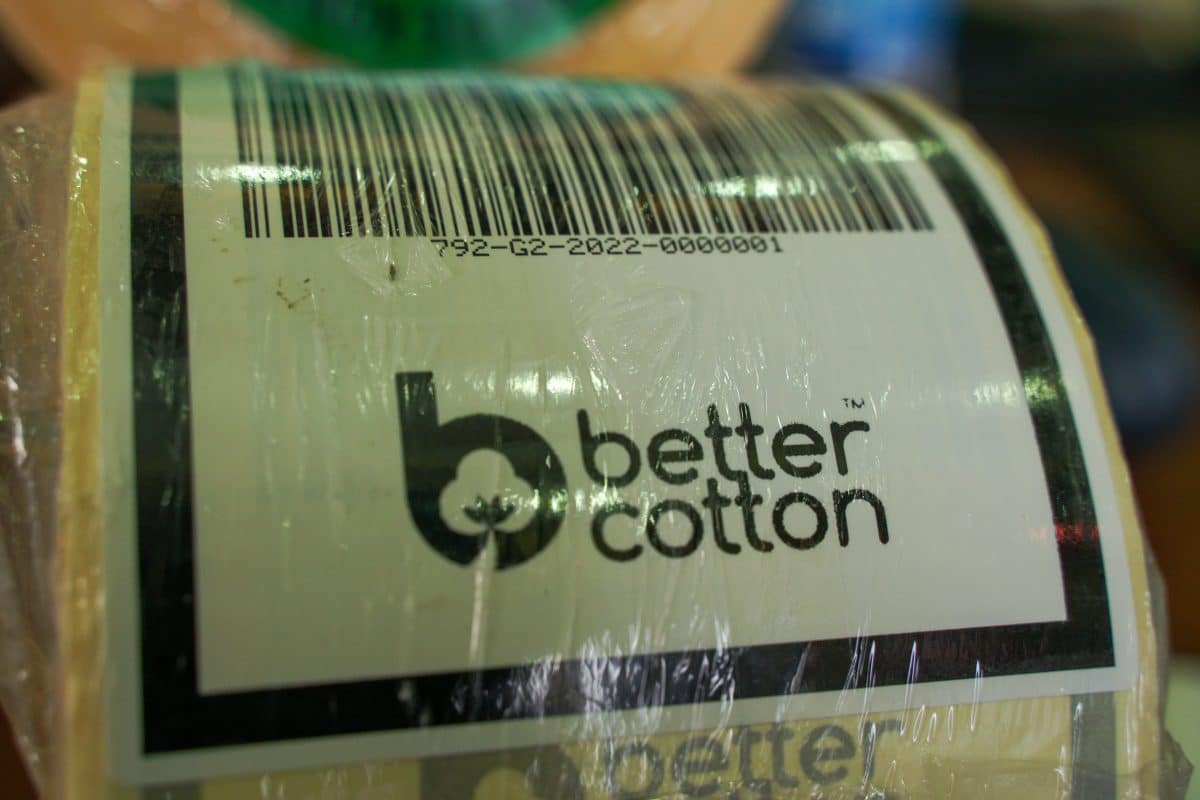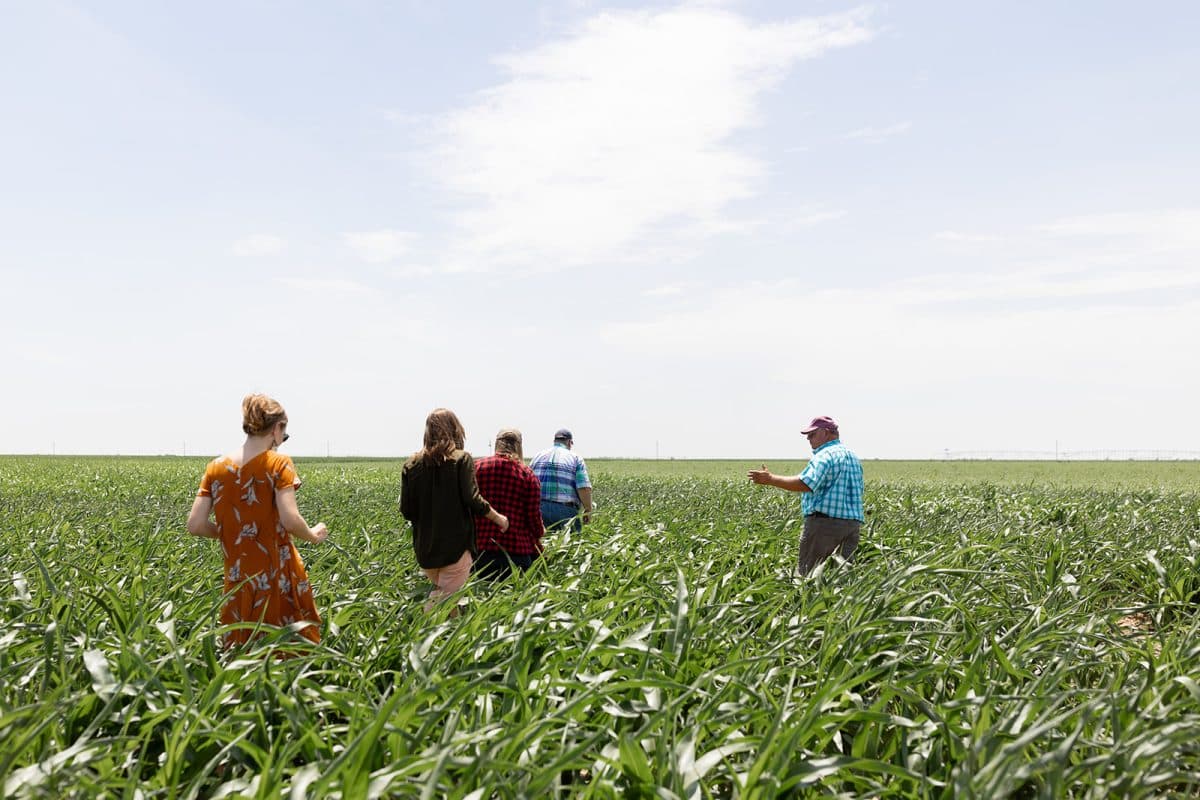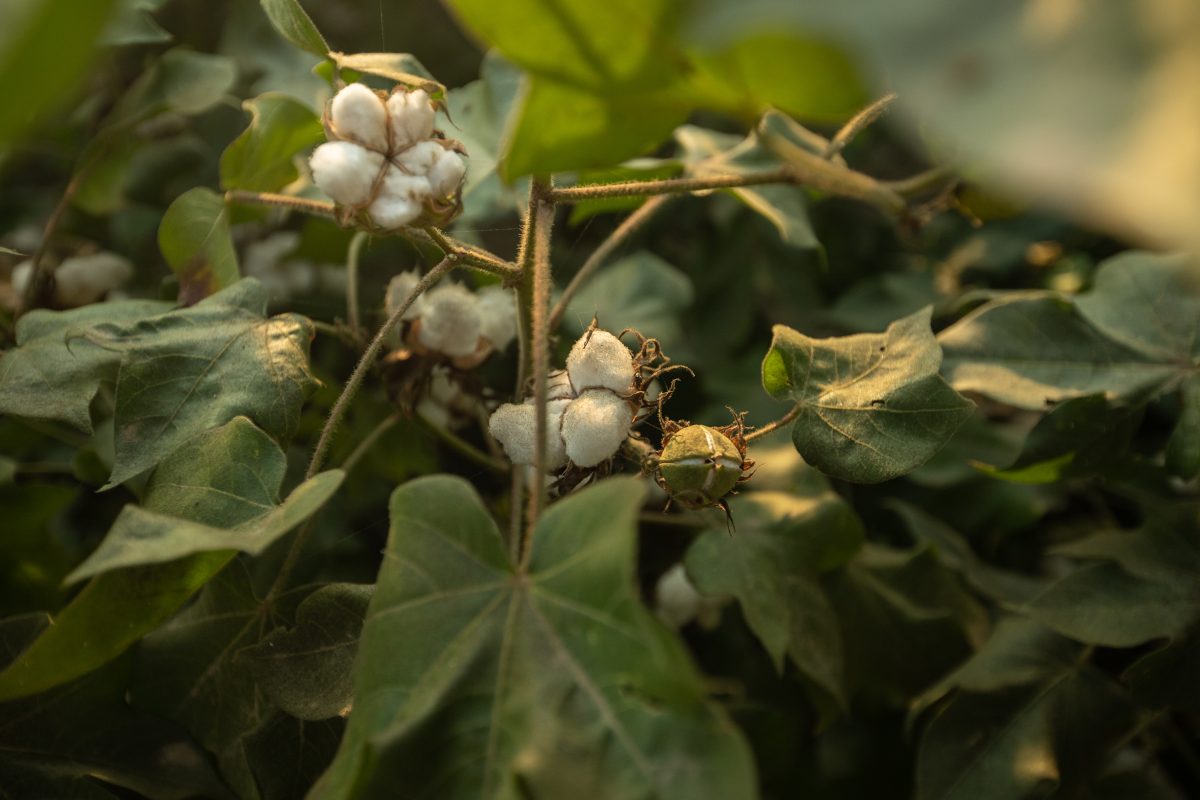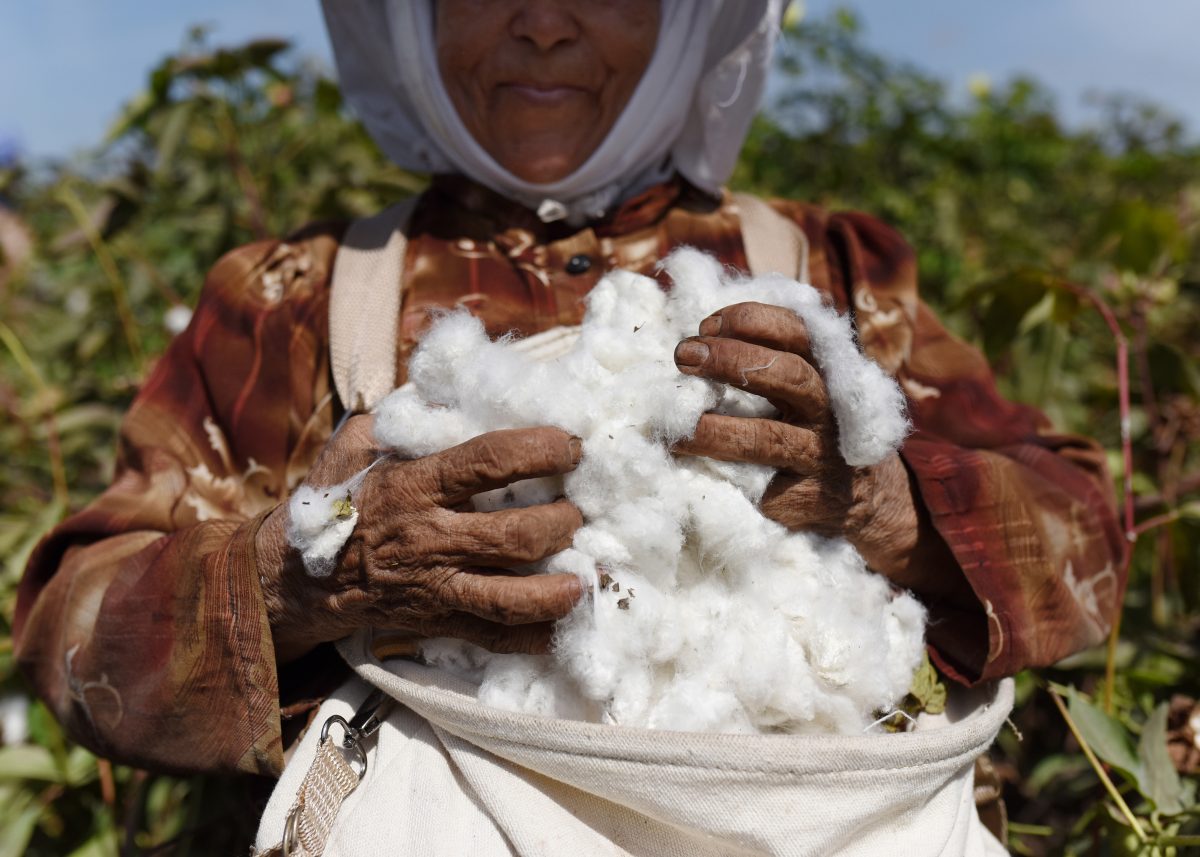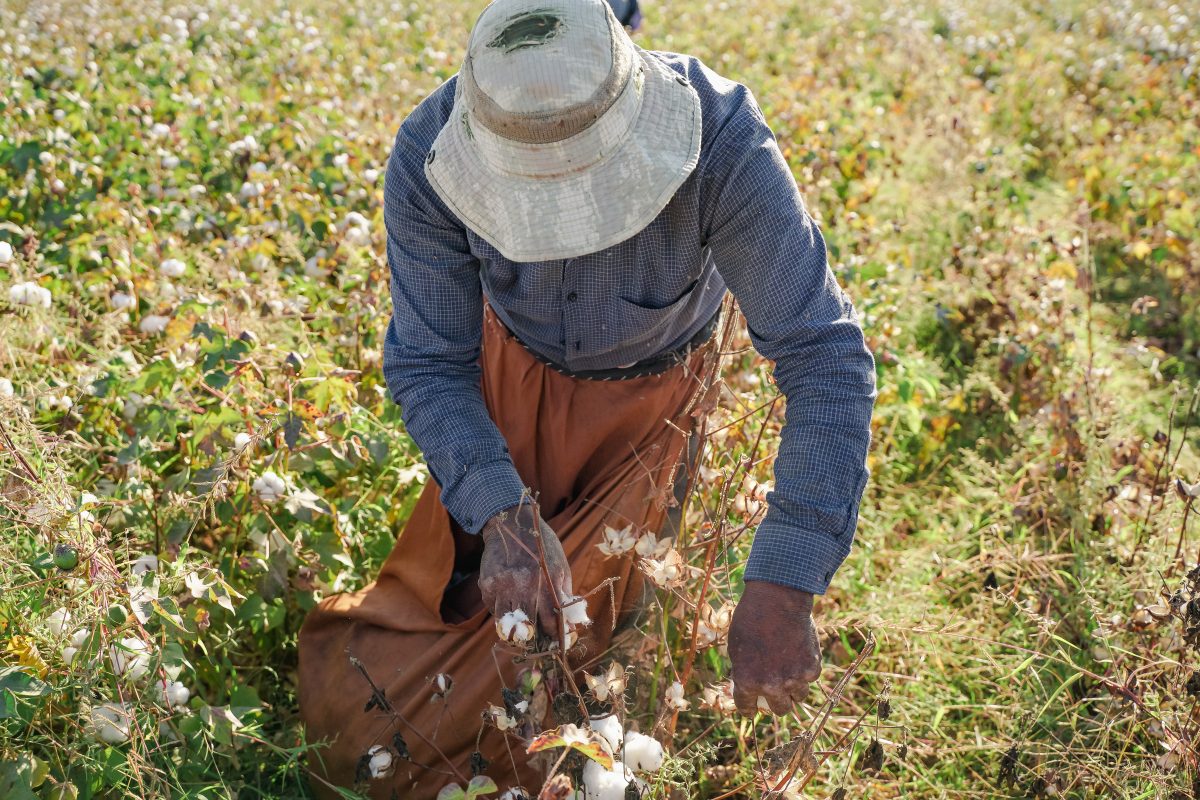Better Cotton Impact Targets: Q&A with Anneke Keuning, Senior Environmental Specialist at BESTSELLER
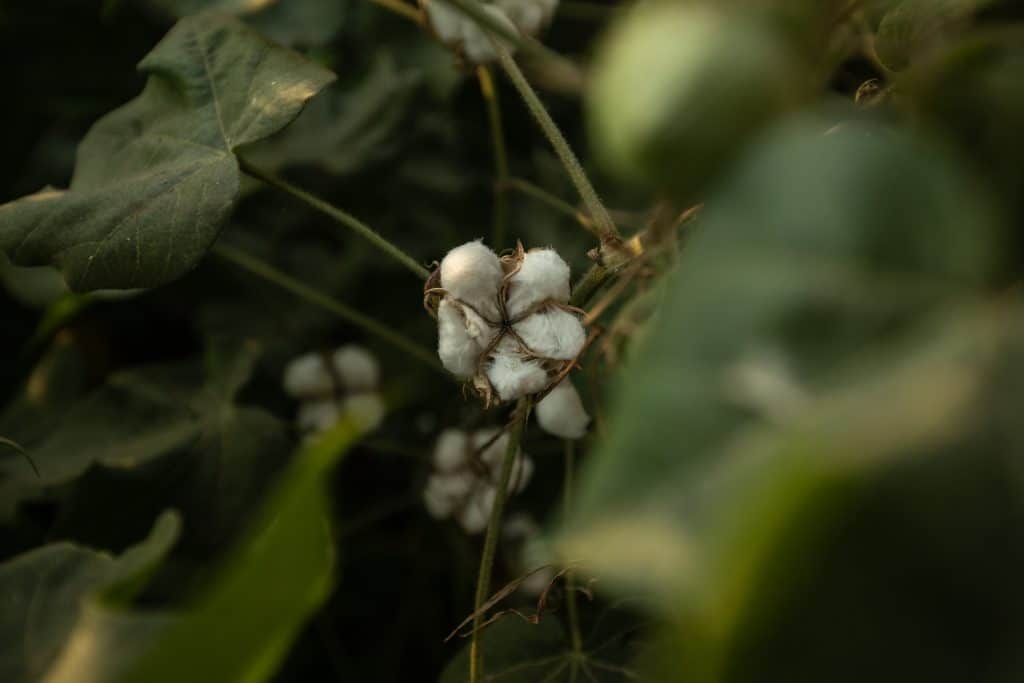

The flash floods, severe heatwaves and wildfires of recent months have demonstrated the imminent threat climate change poses to our planet. In this defining decade, lowering greenhouse gas emissions is amongst the most effective methods of reversing the effects of global warming.
According to the World Resources Institute (WRI), the agriculture sector accounts for nearly as much of world’s greenhouse gas emissions (12%) as the transportation sector (14%), which is why Better Cotton launched its Climate Change Mitigation Impact Target.
By 2030, we have committed to reducing greenhouse gas emissions by 50% per tonne of Better Cotton lint produced. This bold ambition will not only help farmers instil more sustainable practices within their day-to-day operations, but it’ll help the world’s leading fashion retailers and brands as they strive to lessen their Scope 3 emissions and improve the sustainability credentials of the products they sell.
Here, we speak with Anneke Keuning, Senior Environmental Specialist at BESTSELLER, to understand the way in which climate change is impacting their approach to sourcing more sustainable materials.


To what extent can initiatives like Better Cotton support a brand or retailer achieving their own sustainability goals?
To reach our sustainability goals, we have to work with all aspects of our value chain and sourcing all our cotton from certified and branded alternatives like Better Cotton is part of this journey.
Sourcing Better Cotton for BESTSELLER is a minimum requirement, and therefore, all cotton used in BESTSELLER products that is not sourced as organic or recycled cotton will automatically be sourced as Better Cotton.
BESTSELLER’s sustainability strategy is named Fashion FWD and it sets our near-term direction and keeps us accountable with goals like our science based targets for climate through which we are committed to reducing our indirect emissions by 30% in 2030, compared to a 2018 baseline.
How have BESTSELLER’s cotton sourcing practices and requirements evolved over the past decade in response to the mounting climate crisis?
Climate change is increasingly impacting cotton growing regions. And, as the fashion industry is heavily reliant upon our planet’s natural resources such as cotton and clean water, there is a clear risk to our business. As a responsible company we have an obligation to reduce the impact our business has on the environment.
Our approach focuses on actively supporting more sustainable cotton farming practices through investments and our sourcing policies. We work simultaneously from the bottom and top of the supply chain to ensure an increased volume of preferred cotton is available for our own products and the wider fashion industry.
BESTSELLER has been an active member of Better Cotton since 2011 and have been sourcing Better Cotton since 2012. As part of our Fashion FWD strategy the amount of Better Cotton sourced has increased over the years.
For BESTSELLER, how important is it that Better Cotton sets bold climate change mitigation targets?
When we set our science-based targets, we knew these targets were ambitious. Therefore, to achieve our goals it is crucial to work with partners throughout the supply chain who are as ambitious as we are.
And at the same time ensure that our suppliers and farmers that we work with benefit from the increased demand of lower impact cotton.
In order to reach our climate targets, we need bold action within our supply chain, and for us that means working with industry partners that are also willing to work towards those ambitious targets.
Across the fashion and textile sectors, greater onus is being placed on addressing Scope 3 greenhouse gas emissions. How do you assess the increasing appetite for change throughout supply chains?
The vast majority of our climate emissions are from our supply chain. Approximately 20% of our total greenhouse gas emissions come from the production of raw materials. We have a responsibility to work with suppliers across the entire value chain to reduce our impact.
BESTSELLER’s most used raw material is cotton and our vision to increase the use of certified cotton materials year-by-year reflects our desire to respond to consumer and societal demand for lower impact cotton and to safeguard our future raw materials.
In order to reduce our impact, we aim to work with partners like Better Cotton through which we can help cotton farming communities survive and thrive, while reducing our impact and in turn protecting and restoring the environment. At the same time, we have the option to promote change in the industry and to stimulate both demand and supply of lower impact cotton.
Read moreBetter Cotton in India: Addressing Water Woes
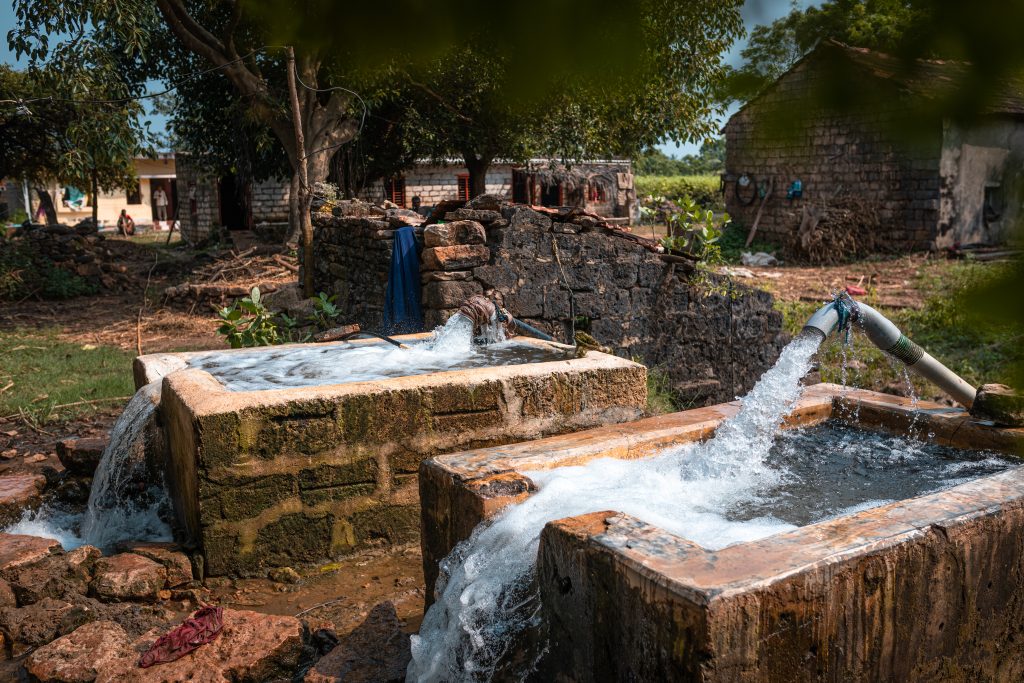

This week, to celebrate World Water Week 2023, we have been placing the spotlight on Better Cotton’s work to promote water stewardship, speaking to the Alliance for Water Stewardship about their work on the revision of Better Cotton’s Principles and Criteria and resharing a piece from earlier this year dispelling misconceptions about cotton’s water consumption. To close out the week, we spoke with Saleena Pookunju, Senior Manager, Programme – India, to discuss the water challenges faced by cotton farmers in India, progress at field-level, and opportunities to collaborate.


What are some of the challenges with water that Better Cotton Farmers face in India?
Anyone who has ever attempted to have an open conversation with a farmer in India knows that within the first few minutes of the conversation, they are going to draw your attention to water – the lack of it, the untimely abundance of it, the poor quality of it!
Water is the most important yield-limiting factor for almost all our farmers. In India, of the 1.5 million hectares grown upon in 2022-23 cotton season, as part of the Better Cotton Programme, only 27% was under completely rainfed conditions. While the rest of the 73% farms have access to various sources of water, timeliness of availability and quality were two of the major concerns they faced. For example, total dissolved salt in ground water in some areas of Gujarat is as high as 10000mg/L and is unusable for irrigation without further treatment.
How can Better Cotton address some of the challenges with water that cotton producing communities face?
It’s extremely important that water challenges are understood and addressed holistically in the context of natural resource management and climate change, and in line with the limited resources at the disposal of farmers and their communities.
With the revision of the Better Cotton Principles & Criteria – announced in April – we have moved to further promote water stewardship. As such, in addition to supporting farmers to better manage water usage at the farm-level, focus has also been on identifying shared challenges and opportunities to collaborate.
Could you share some concrete examples of interventions in cotton communities to build their resilience to climate change and address challenges surrounding water?
Some of the water source strengthening work we have promoted and supported include desilting check dams, village and farm-level ponds, deepening ponds in order to increase water storage capacity, and constructing rainwater harvesting and water recharging structures, as well as storage wells.
To further improve the resilience of Better Cotton Farmers, our programme advocates for micro-irrigation systems such as drip and sprinklers where feasible. In addition, by promoting various soil moisture management practices such as mulching, intercropping, green manuring, our programme also encourages community-level watershed mapping and crop water budgeting so that farmers can make informed decisions on what to grow based on the level of water available for that season.
While water woes intensify due to the climate crisis, Better Cotton resolves to continue to bring more investment to the field and strengthen partnerships with stakeholders.
Read moreWorld Water Week: Q&A with Mark Dent, Senior Advisor at Alliance for Water Stewardship


At the inaugural Better Cotton Member Awards, presented during the Better Cotton Conference in June 2023, we presented the Outstanding Contribution Award to Mark Dent, Senior Advisor at Alliance for Water Stewardship (AWS), in recognition of his work on the revision of Better Cotton’s Principles and Criteria (P&C).
Mark was the AWS representative on the Natural Resources Working Group, one of the three key working groups, made up of subject experts, which helped to draft the revised P&C. He provided guidance and expertise on water-related issues, primarily those involving multiple stakeholders.
In celebration of World Water Week 2023, we sat down with Mark to hear about the revision, AWS’ work, and the vital importance of water stewardship in cotton farming.
Could you give us an introduction to the Alliance for Water Stewardship (AWS) and what it does?
The Alliance for Water Stewardship (AWS) is a global membership organisation comprising private sector, public sector, and civil society organisations (CSOs). Our members contribute to the sustainability of local water resources through the International Water Stewardship Standard, our framework for the sustainable use of water which drives, recognises and rewards good water stewardship performance.
Our vision is a water-secure world that enables people, cultures, business and nature to prosper, now and in the future. To achieve this vision, our mission is to ignite and nurture global and local leadership in credible water stewardship that recognises and secures the social, cultural, environmental and economic value of freshwater.
How was your experience of contributing to the revision of Better Cotton’s Principles and Criteria?
I am grateful to AWS for entrusting me to be their representative in this work. It was an extraordinary experience to witness first-hand the degree to which the Better Cotton Standard Revision Project’s leadership created the careful balance between moving forward with a complex and tight agenda and creating the appropriate space and tone for innovative exploration of the needs of all stakeholders.
What role does water stewardship have to play in the sustainable production of cotton?
Water is a finite common resource that has no substitute, and therefore needs to be shared between all stakeholders in a way that ensures ‘some, for all, forever’. Our standard presents a framework for cotton farms and other water-using sites to respond to local challenges and work towards sustainable, multi-stakeholder use of water, both within the fence-line of their farms and beyond, into the wider catchment. It focuses on five outcomes which are of central importance to sustainable cotton production. These are good water governance; sustainable water balance; good quality water status; healthy important water-related areas; and safe water, sanitation and hygiene for all.
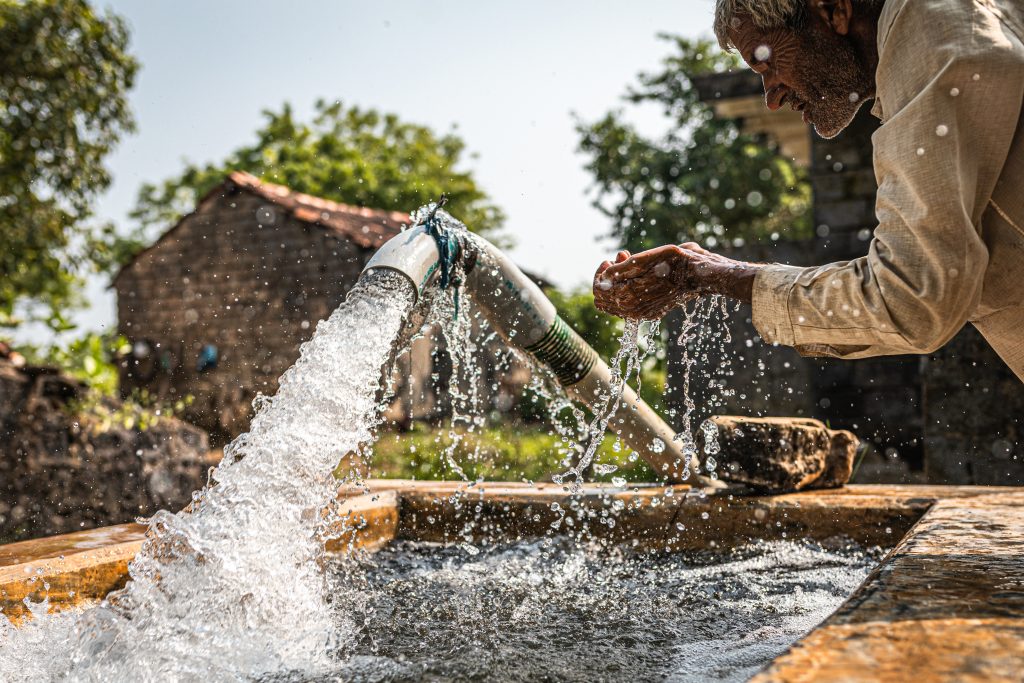

How will the revised P&C drive impact in improving water stewardship?
The sheer scale of Better Cotton’s reach, globally, means that essential water steward-like skills, knowledge and actions are being propagated on a scale that makes a significant contribution to the vision & mission of the Alliance for Water Stewardship, described earlier.
How important is it to ensure that discussions around water stewardship are inclusive of all stakeholders?
It is of paramount importance, for many reasons. I will focus on three:
- Water is hyper-connected to all living systems and so one stakeholder’s solution is very often the source of another stakeholder’s problem.
- The sheer scale of water-related challenges demands that they be addressed collectively to capitalise on economies.
- For proposed water-related options to gain social acceptance, they need to emerge from inclusive dialogue that simultaneously helps to inform the stakeholders into creating socially robust (aka actionable) knowledge, which in turn results in wise and timely implementation.
Such inclusive engagements also generate ‘response-able’ behaviours in which stakeholders sense impending challenges early enough to co-generate and practice wise, collective, co-ordinated responses which can significantly lessen the impact of unavoidable ‘shocks’ to the system.
Finally, inclusive stakeholder engagement addresses the phenomenon of bounded rationality which states that a person cannot be rational beyond the bounds of their cognitive or knowledge space. So, when the consequences of our ‘rational’ actions in relation to water manifest beyond our knowledge space, they could very well create highly irrational consequences. We need other stakeholders to reveal these potential consequences and thus prevent us from creating unsustainable water-related systems. Let me give you an example, I consider myself to be a rational person, BUT if I was placed in a position where I had to do brain surgery, I would inevitably perform some highly irrational actions that would harm the patient.
What are the most important steps the cotton sector must take to improve water use?
The ability to think and act in terms of systems is key to ensuring that cotton sector stakeholders improve their water use by responding appropriately to their local context. At the same time, this system thinking approach equips cotton producers to adhere to most of the Principles & Criteria in the Better Cotton Standard. So, training in practical, multi-stakeholder, context-related systems thinking is essential.
- To read more about the Alliance for Water Stewardship (AWS), click here.
- AWS is currently undertaking a review and revision of the AWS Standard V2.0. For more information click here.
Decent Work: How Better Cotton Partners in India Employed Our New ‘Assess & Address’ Approach to Remediate Child Labour
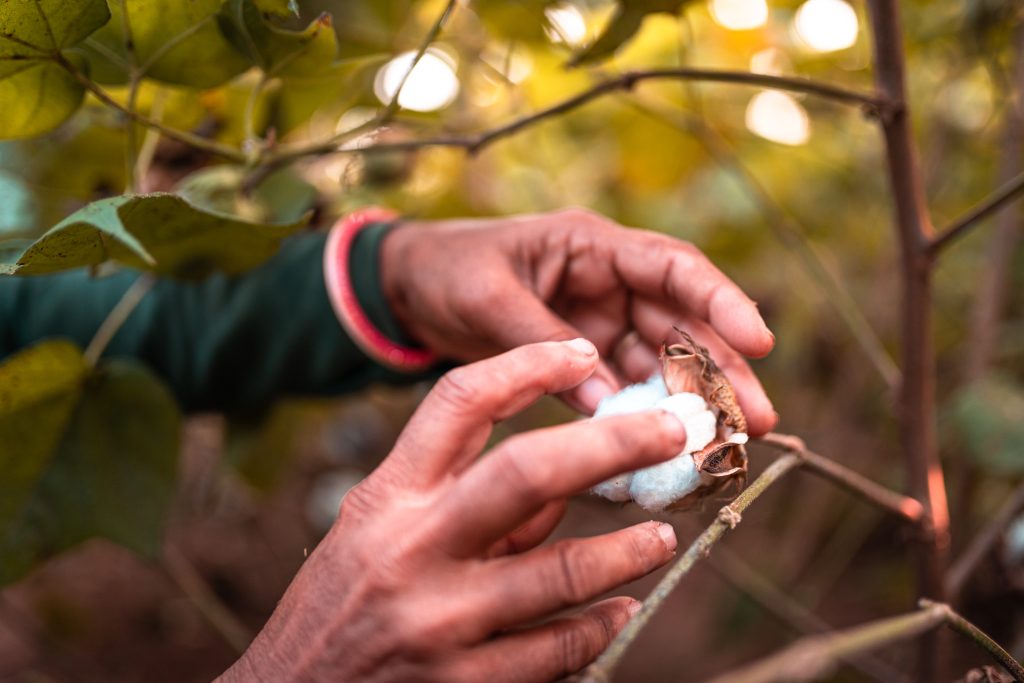

By Leyla Shamchiyeva, Senior Decent Work Manager at Better Cotton
Earlier this year, we unveiled the latest iteration of the Better Cotton Principles and Criteria (P&C), the foundational document that defines our farm-level standard, outlining the global framework for Better Cotton. The revision enhances our field-level standard, ensuring its continued effectiveness in driving continuous improvement and fostering sustainability impact.
One of the standout changes within the P&C is the introduction of the ‘assess and address’ approach to Decent Work. Inspired by Rainforest Alliance’s methodology, this approach departs from a rigid zero-tolerance stance towards infringements, which has historically hampered the open disclosure of issues and eroded trust with partners. Instead, it promotes greater transparency and proactivity in identifying and rectifying issues.
Amanda Noakes, our Global Decent Work and Human Rights Coordinator, elaborates on the approach and how it encourages collaboration in her insightful blog on the subject:
It aims to work together with producers and communities to tackle the root causes of human and labour rights challenges, holistically and collaboratively. It also puts a greater emphasis on supporting and investing in field-level systems and stakeholder collaboration to prevent, mitigate, identify and address issues, so that responsibility and accountability are locally owned and shared.
A great illustration of how the ‘assess and address’ approach works comes from India, where a recent incident highlighted the effectiveness of the strategy. While conducting regular monitoring activities, our Better Cotton Partners in India identified child labour within their project area. The causes were attributed to a combination of pandemic-related school closures and climatic anomalies like excessive rainfall, which resulted in a sudden demand for labour to harvest crops.
In an open disclosure during a regular Better Cotton licensing assessment visit in Maharashtra, India, our Partners candidly discussed their discovery of child labour. In doing so, they demonstrated their commitment to resolving the issue, outlining their robust monitoring mechanisms. Their in-depth understanding of triggers and risk factors, and their proactive measures to mitigate and prevent recurrence, underscored their determination to address the issue holistically. They engaged the local community, raising awareness on preventing child labour, and collaborated with the Child Labour Monitoring Committee to effectively track risks.
Overcoming initial apprehension, the Partners chose transparency and compliance with the Better Cotton Principles and Criteria. Their efforts yielded positive outcomes, notably in the reduction of child labour risks. This success story is emblematic of the ‘assess and address’ ethos. The Partners’ comprehensive approach not only mitigated the recurrence of child labour, but also indicated the strength of their ongoing vigilance to identify and address other issues in the future.
We strongly encourage all our Partners to adopt transparency and proactively tackle challenges, regardless of the complexities they face. We are firmly committed to assisting them in this through practical capacity strengthening on labour monitoring systems. These tools will empower Partners to identify risks, formulate context-sensitive mitigation strategies, and monitor the efficacy of these measures.
Our ongoing pilot programme in India will yield valuable insights to inform the guidance for our Partners worldwide. The ‘assess and address’ approach will become a requirement for all our Partners with the introduction of the revised Better Cotton Standard v3.0 in the upcoming 2024-25 season.
For the sustainability of this initiative, we must also confront the root causes of child labour, encompassing household poverty and inadequate educational infrastructure in rural areas. This demands a collective effort involving government bodies, civil society channels and businesses benefiting from the labour of the farming communities. As a multi-stakeholder organisation, we actively seek meaningful engagement with all stakeholders to support our Partners in achieving enhanced Decent Work outcomes for Better Cotton farming communities. Together, we can truly make a difference and foster sustainable change.
To find out more about the revision of our Principles and Criteria, click here.
Read moreWhy We Made Gender Equality a Cross-cutting Priority in Our Latest Principles and Criteria Revision




By Alessandra Barbarewicz, Senior Decent Work Officer, Better Cotton
Gender equality is critical to advancing progress across all sustainability outcomes. This is especially true in the cotton sector, where women play a significant role in production. Increasing gender equality is crucial – it’s not just a matter of social justice, but also has proven economic and environmental benefits.
As part of Better Cotton’s 2030 Impact Targets, we have set the target of reaching one million women in cotton with programmes and resources that promote equal farm decision-making, build climate resilience, or support improved livelihoods. In addition, we have committed to ensuring that 25% of field staff are women with the power to influence sustainable cotton production.
In order to meet this target, we need to drive significant change over the next decade. That’s why, in the latest revision of our Principles and Criteria (P&C), the document which lays out the global definition of Better Cotton, we have made Gender Equality a cross-cutting priority across all of our Principles.
As compared to the previous version of the Principles and Criteria, in which Gender Equality was included under the Decent Work principle, v.3.0 incorporates gender throughout the whole document, recognising the critical role of women in cotton production. This revised approach aims to support Better Cotton’s efforts to tackle systemic gender inequalities and promote women’s rights by supporting their participation and inclusion. The updated P&C aims to foster women’s participation and inclusion in all farm activities, looking to achieve this through a number of new measures.
Firstly, throughout the updated document, we have moved away from a focus on farmers – in certain contexts traditionally identified with male heads of household – to all individuals involved in farm-level cotton production, to ensure that everyone is proactively included in activities related to the implementation of the Better Cotton Standard, regardless of their gender, status, background or other characteristics.
The revised standard also looks to acknowledge that disadvantage and discrimination are not experienced by women alone, and that systems of inequality based on gender, race, ethnicity, sexual orientation, disability, class and other forms of discrimination overlap and create unique dynamics and effects. As such, it highlights that power structures should be seen and addressed in an intersectional way.
Furthermore, we have introduced requirements to the Management Principle which call for a Gender Lead or Gender Committee to identify and effectively address local barriers to women’s inclusion. To comply with this criterion, Producers are required to appoint an individual or committee responsible for identifying and raising awareness on gender-related issues, and to implement their suggestions as part of the activity and monitoring plans.
Lastly, in order to ensure that gender equality is mainstreamed across every farm, assessments on Producers’ efforts to promote women’s inclusion and tackle gender inequalities are now integrated into a range of different indicators across all of our Principles. The full list of these indicators can be found in Annex 1 of the P&C v.3.0 (pages 84-89).
Through our Principles and Criteria and our work across the Better Cotton Standard System, Better Cotton has a significant opportunity to promote the reduction of systemic gender inequality and promote women’s rights by supporting their participation and inclusion. To find out more how the latest revision of the P&C will help us to tackle these challenges, click here.
Read moreBetter Cotton Partners With Search For Justice on Child Labour Prevention in Pakistan
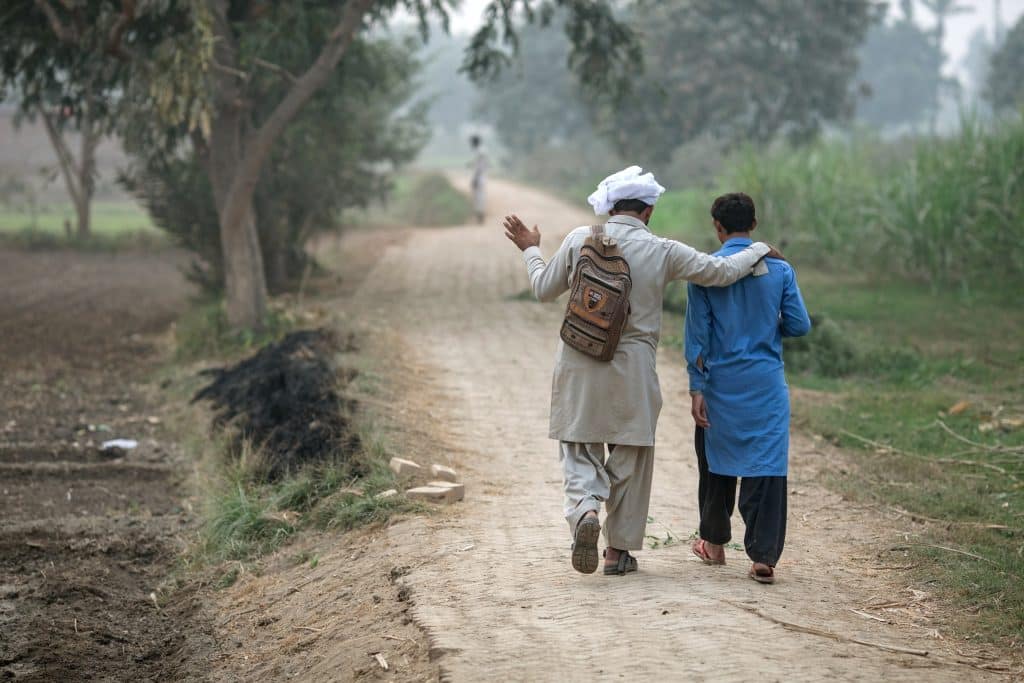

Better Cotton has recently developed a partnership with Search For Justice, a member of the Children’s Advocacy Network and leading not-for-profit organisation working on child protection issues in Pakistan. The partnership is supported by the Better Cotton Growth & Innovation Fund’s (GIF) Knowledge Partner fund, aiming to support Better Cotton and its partner, Rural Education & Economic Development Society (REEDS) on child labour prevention efforts in Rahim Yar Khan, Punjab.
According to a labour force survey carried out by the Pakistan Bureau of Statistics (2021-22), more than 1.2 million children aged 10-14 are employed in Pakistan, of which 56% are working in the agricultural sector. In reality, Pakistan’s child labour estimates are much higher, with some sources suggesting up to 10 million children, across age groups, engaged in child labour (NRSP, 2012). A rapid assessment of the child labour situation in Rahim Yar Khan and three other Punjab districts, by the National Rural Support Program (NRSP) in 2012, also emphasised the significance of the challenge, estimating approximately 385,000 children engaged in child labour across the four Southern Punjab districts, 26% of which were engaged in cotton farm labour.
Against this backdrop, our 18-month project with Search For Justice aims to strengthen the capacities of 195 field staff, to support increased understanding and awareness at farm level of the difference between age-appropriate child work and child labour. It will also mentor and support field staff on the identification, monitoring and remediation of child labour, including increasing awareness of relevant legal and institutional mechanisms.
Another key ambition of the partnership is to consult with public sector stakeholders in Punjab to support advocacy initiatives on child labour, and decent work, more generally.
With ambitious global targets, set through the UN’s Sustainable Development Goals, to end child labour in all its forms by 2025 (SDG 8 – Target 8.7), Better Cotton and its partners are committed to supporting global efforts, taking significant measures to prevent, identify and remediate child labour in cotton farming contexts.
Tackling child labour requires an integrated approach, which considers its multiple underlying causes. This is why Better Cotton considers it fundamental to collaborate with relevant partners to make progress, especially considering the magnitude of the challenge in cotton, and the agricultural sector more generally.
We will share information on the progress and outcomes of the partnership as it develops, as well as providing updates on our efforts to strengthen rights protections in cotton production more broadly. If you’d be interested in learning more or supporting Better Cotton in its mission to promote decent work at farm level, please contact Amanda Noakes, Global Decent Work and Human Rights Coordinator.
Read moreVersion 3.1 of Better Cotton Claims Framework Launched
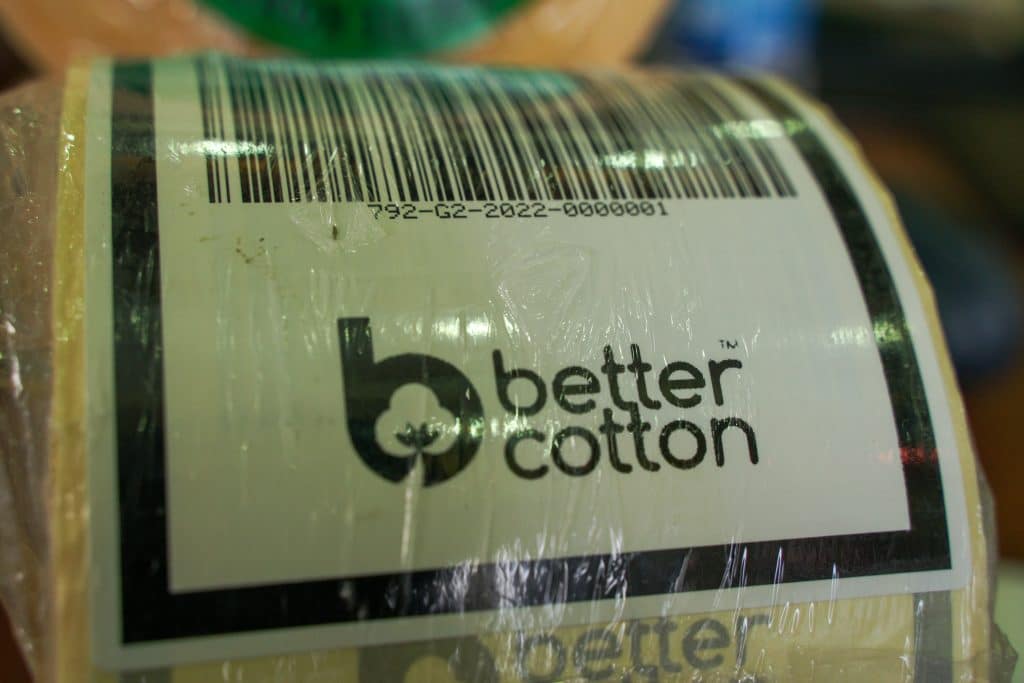

Better Cotton has announced an update to the Better Cotton Claims Framework – the set of guidelines which establishes guidance and rules to ensure that Members can make claims about their commitments to Better Cotton in a credible and positive way.
The update, version 3.1, simplifies the document for improved usability, including a quick reference table to increase clarity on which claims are available to which member audiences. It also adds new claims translations, as well as clarifications on contexts in which claims can be used and the monitoring process Better Cotton follows.
The most significant update mirrors the Cotton Consumption Independent Assessment requirements in place from January 2024. Independent Assessments will bolster claims and ensure sourcing thresholds are more meaningful, making reporting on volumes of Better Cotton sourced and On-Product Mark use more robust and credible. As of January 2024, Independent Assessment will be a requirement for any Retailer and Brand Member wishing to make advanced claims or use the Better Cotton On-Product Mark.
Our next complete revision of the Claims Framework (version 4.0) will be released in 2024, further to multistakeholder and cross-functional consultations. Version 4.0 will accommodate Better Cotton’s move towards traceability and further reflect updates to industry best practice and legislation for sustainability claims.
To learn more about our current work on claims and contribute to the conversation, register here for our upcoming webinar, in which we will cover:
- The Better Cotton Claims Framework V3.1
- The myBetterCotton portal and the online claims approval process
- Claims monitoring and compliance
- Live Retailer and Brand Member survey on the future of claims
US Cotton Connections: Better Cotton Members Join Quarterway Cotton Growers to Learn About Regenerative Cotton Systems
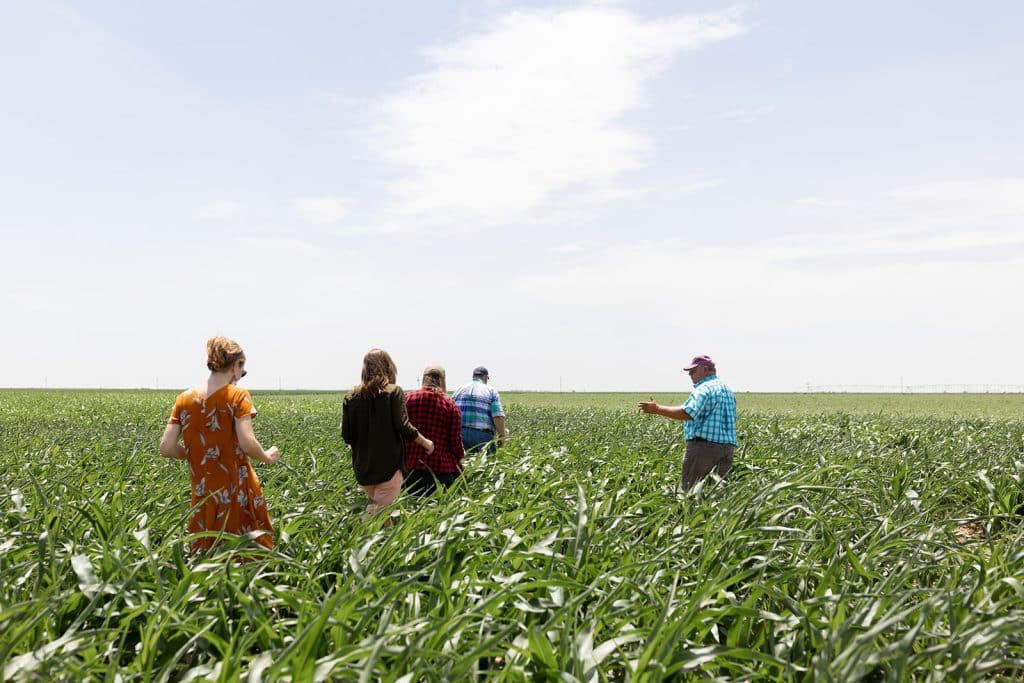



By Karen Wynne, US Programme Coordinator at Better Cotton
Recently, Quarterway Cotton Growers hosted Better Cotton Members for a tour of a cotton gin, farms and processors in Plainview, Texas. Representatives from brands, mills, merchants, civil society, university extension services and supporting businesses joined Better Cotton growers in the field to learn more about sustainable and regenerative cotton production systems in West Texas.
Representatives from ECOM also discussed their role as a merchant in the supply chain, highlighting their sustainability initiatives, including a USDA Climate Smart Partnership with Quarterway.
We are grateful for the opportunity to participate in the conversations that took place among participants and share the work that ECOM USA is doing to promote climate-smart cotton. We are proud of Quarterway Cotton Growers for the focus they place on regenerative cotton production that supports the long-term viability of the industry and the health of the land. They truly are a leading group of cotton growers and ECOM USA is proud to offer their cotton to buyers around the world.
Texas produces more cotton than any other state in the US and West Texas produces the bulk of that. Coming from Alabama, where it can rain 60 inches in a year, I am infinitely curious about growing a crop in a place that gets more like 10-20 inches of annual rainfall, sometimes without irrigation. The types of crops that can be grown and how they are managed are so different. It was great to get out in the field with Better Cotton Members and Farmers to understand the complex set of decisions that growers need to make every season, and how the weather can ruin their plans.
Growers in the region are raising a variety of crops in addition to cotton. Corn, wheat, milo (otherwise known as grain sorghum), sorghum silage and hybrids, and millet are commonly grown in Hale County. Many cotton growers also raise cattle and incorporate grazing into their crop rotations. A pickle plant, a hybrid seed company, and dairies in the region all provide opportunities for more diverse cropping systems that include cucumbers, small grains, and livestock feed. In addition, manure from dairies returns to fields as a local source of fertiliser that reduces the use of synthetic inputs. We often talk about circularity in theory; this tour gave us the opportunity to dig into one example of its practical application.
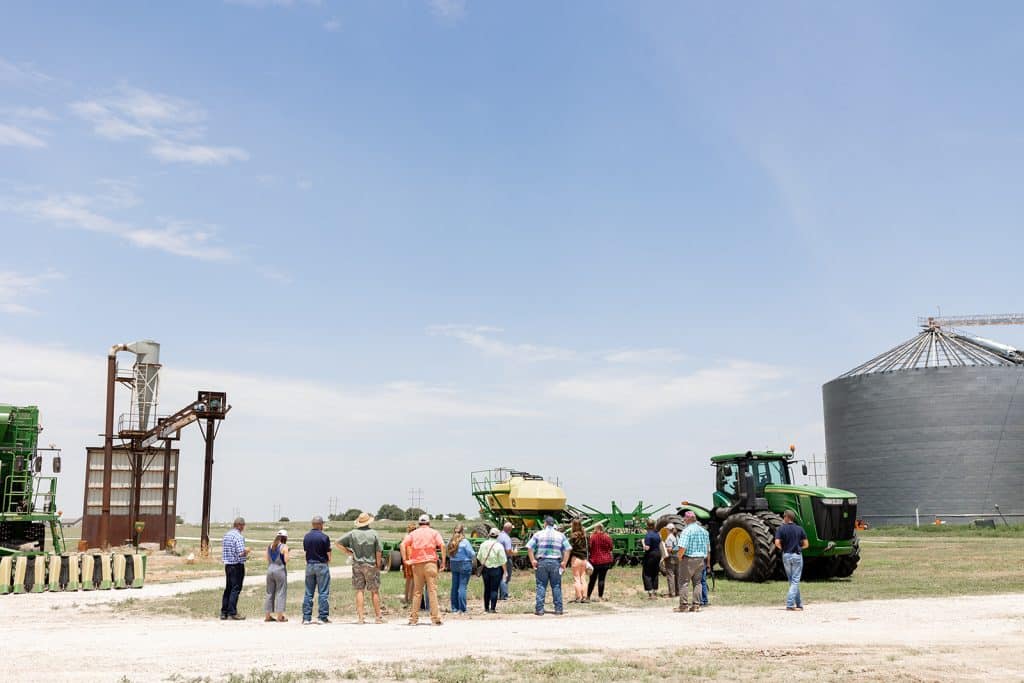

This diversification is key for pest and soil management by creating above and below-ground habitats for beneficial species, interrupting pest life cycles, and improving nutrient cycling. It also provides alternatives in years when the cotton crop is lost due to severe weather such as heavy rain, hail, or drought, which are not uncommon in West Texas.
Quarterway growers are experimenting with practices and systems to improve soil health, water use, and overall efficiency. They are reducing fuel consumption with more efficient equipment. Many are cover cropping with wheat, rye, or triticale, and then planting into crop residue to minimise wind erosion and increase soil cover. Others are modifying row spacing to increase yield per plant, reduce seed costs, and improve water use efficiency, or installing drip irrigation for even more targeted water use. These improvements can require significant up-front investment in new technologies or unproven practices; while they may pay off in the long run there is a lot of risk involved. Quarterway growers are taking those risks and comparing notes on what works best.
You can hear directly from Quarterway Cotton Growers in this video from the Soil Health Institute. We’d like to extend our thanks to Todd Straley, the growers at Quarterway and everyone else involved in organising such an insightful trip.
Be sure to register here for our mailing list to receive updates on Better Cotton’s activities in the US and follow the Better Cotton events page to register for future field events.
Read moreBetter Cotton Calls for Alignment on EU Greenwashing Proposals
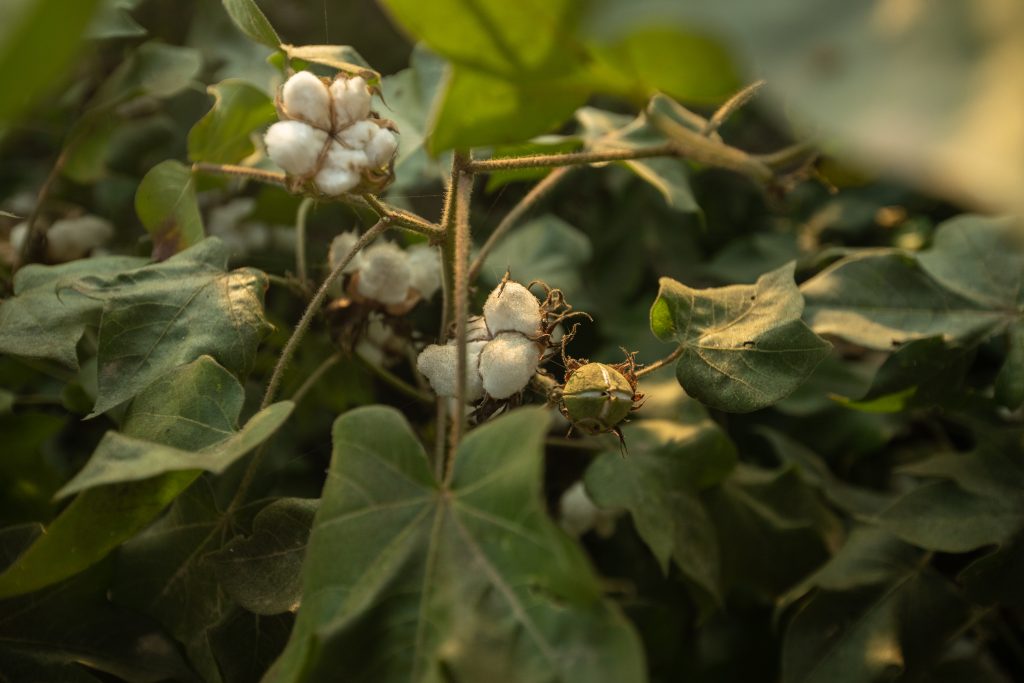

Better Cotton has submitted feedback on the European Union’s proposal for a Directive on the Substantiation and Communication of Explicit Environmental Claims (Green Claims Directive) and called for clarity on its remit amongst a suite of new laws.
The proposed directive, published in March, sets out common criteria by which companies would be required to substantiate environmental claims. Products and services must, under this law, be accompanied by accurate and verifiable information on their sustainability credentials.
The EU has introduced a suite of legislative proposals to address the adverse impacts of the textile industry. Amongst other things, they have been designed to safeguard both consumers and businesses against misleading practices, described as ‘greenwashing’. A rise in greenwashing has caused uncertainty in society about the authenticity of company sustainability claims, hindering a consumer’s ability to make informed purchasing decisions.
Better Cotton welcomes the EU’s proposed directive, believing that there is a strong need for clear guidance on how claims are communicated to standardise industry practice and put an end to greenwashing.
One of the pillars of the Better Cotton Standard System is its Claims Framework, which was created through a multi-stakeholder consultation process and is subject to an annual review.
Through its Claims Framework, Better Cotton supports eligible members to communicate their commitment to Better Cotton in an accurate and credible way.
The opportunity for Better Cotton Members to communicate their investment in Better Cotton to consumers strengthens their commitment to the organisation’s farm-level programmes which seek social, environmental and economic improvements for cotton farmers and farming communities.
It is because of the multifaceted nature of Better Cotton’s operations that the organisation is supportive of the EU’s decision not to limit claim substantiation to just one standard methodology, such as the Product Environmental Footprint (PEF) or Life Cycle Assessment (LCA).
Whilst such a mechanism is effective, it would fail to encompass all of the complex, interconnected aspects of cotton production, therefore jeopardising a company’s ability to make claims about its commitment to more sustainable cotton.
Flexibility will be instrumental to ensuring substantiation methods are adapted to the wide array of impact categories and practices covered by schemes, and the variability in operating contexts found across sectors and materials. Maintaining flexibility is the only way to favour a just transition across the world and enhance sustainable livelihoods.
The role of the Green Claims Directive in relation to likeminded legislation is also addressed in Better Cotton’s feedback. Specifically, the organisation has called for clarity and alignment on the purpose of the directive comparative to the proposal for the Directive on Empowering Consumers for the Green Transition (Empowering Consumers Directive), which was introduced in March 2022.
For example, it is currently unclear whether sustainability labels, in addition to environmental labels, would need to comply only with the Empowering Consumers Directive, or whether these would be covered under the Green Claims Directive.
Better Cotton welcomes the EU’s leadership in driving efforts to standardise requirements on sustainability communications and is open to supporting authorities as they refine proposed legislation following their request for input.
Read moreBetter Cotton and Cotton Egypt Association Forge New Strategic Partnership in Egypt
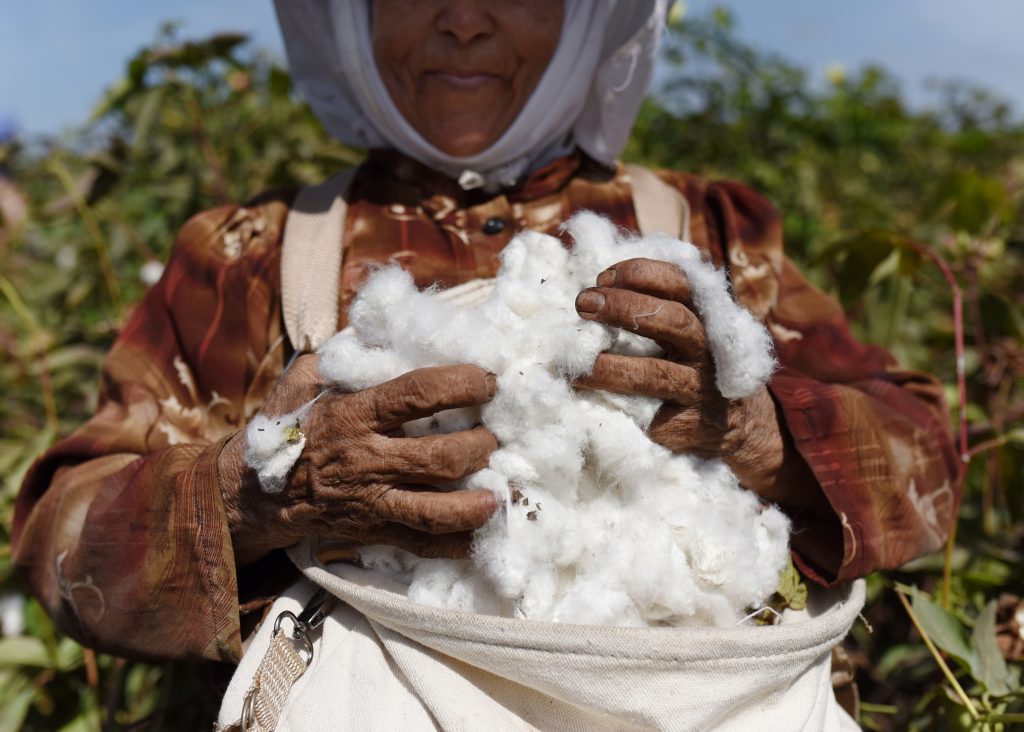

Better Cotton and Cotton Egypt Association (CEA), the organisation responsible for promoting and protecting Egyptian cotton worldwide, have announced a new strategic partnership to expand the Better Cotton programme in Egypt.
The programme was first launched in 2020 by the Egyptian Cotton Project, implemented by the United Nations Industrial Development Organization (UNIDO) and funded by the Italian Agency for Development Cooperation and International Islamic Trade Finance Corporation (ITFC). This collaboration aims to further enhance the sustainability and quality of Egyptian cotton production while ensuring fair working conditions for farmers.
Egyptian cotton is renowned globally for its exceptional quality, softness, and durability. With a rich history dating back to the 19th century, it has become a symbol of luxury and excellence in the textile industry. However, in recent years, challenges such as climate change, water scarcity, and fluctuating market demands have posed significant threats to the sustainability of Egyptian cotton farming.
Recognising the need for proactive measures to safeguard the future of Egyptian cotton, CEA has joined forces with Better Cotton in Egypt. Through this renewed strategic partnership, both parties will work together to expand the implementation of sustainable farming techniques, provide further training and support to farmers, and ensure compliance with rigorous environmental and social standards. By adopting these practices, Egyptian cotton farmers will be supported in reducing water consumption, decreasing chemical pesticide usage, and improving soil health, ultimately leading to more sustainable and resilient cotton production.
Furthermore, this partnership will enable CEA to leverage Better Cotton’s extensive network of industry stakeholders, including brands, retailers, and textile mills committed to sourcing sustainable cotton. This collaboration will further facilitate increased market access for Egyptian cotton products, ensuring a fair return for farmers and supporting the growth of the Egyptian textile industry.
We are excited about this strategic partnership with Better Cotton in Egypt. By combining our expertise and resources, we can drive positive change in Egyptian cotton farming practices and secure a sustainable future for our industry. This collaboration aligns perfectly with our vision to globally authenticate the legacy of Egyptian cotton.
Egypt’s cotton is globally renowned, and our renewed strategic partnership with Cotton Egypt Association will allow us to build on our work to make cotton farming in the country a more climate resilient, environmentally friendly and responsible activity. We look forward to working with CEA to help Egyptian cotton communities survive and thrive, while protecting and restoring the environment.
Better Cotton and Cotton Egypt Association are confident that this strategic partnership will contribute to the long-term viability and competitiveness of Egyptian cotton, while also addressing the growing demand for sustainable and ethically produced textiles.
Read moreClimate Action: How Our New Principles and Criteria Prioritises Mitigation and Adaptation
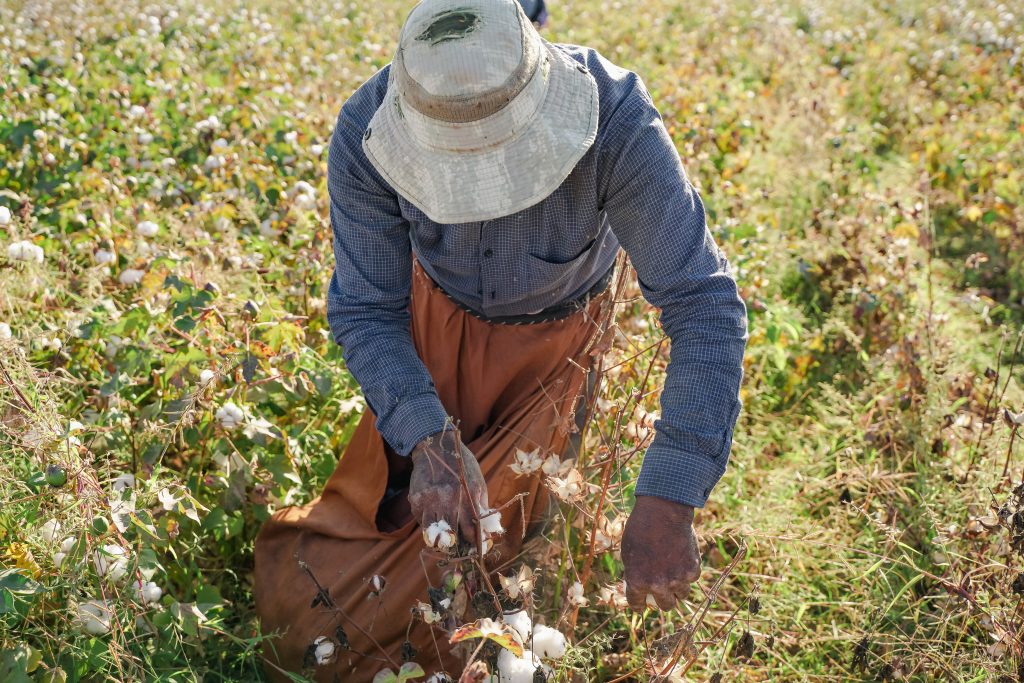



By Nathanael Dominici, Climate Change Manager at Better Cotton
Agriculture, which accounts for over 10% of the world’s greenhouse gas (GHG) emissions, has a huge potential to positively influence global GHG mitigation strategies. Reducing the amount of greenhouse gases in our atmosphere is crucial in limiting the impacts of climate change, and agricultural sectors such as cotton have a key role to play in this, from reducing the emissions released by pesticides and fertilisers to storing atmospheric carbon through forests and soil.
Cotton communities are already being severely affected by climate change, and will continue to feel this impact as the climate crisis continues. This means that whilst GHG mitigation is essential, the cotton sector must also support cotton farmers and workers to develop climate adaptation strategies to minimise the impact of climate change on their farms and better prepare for climate shocks.
Consequently, helping farmers to adopt low-carbon practices and reinforcing their resilience to climate change whilst improving their livelihoods are critical priorities for Better Cotton, with our 2030 Strategy outlining our target of reducing greenhouse gas emissions per tonne of Better Cotton lint produced by 50% from the 2017 baseline.
In order to acknowledge these challenges and support our farmers in meeting this target, in the recent revision of our Principles and Criteria (P&C) we introduced a more explicit focus on climate change. The P&C, which lays out the global definition of Better Cotton, was updated earlier this year to ensure that it remains an effective tool to drive continuous improvement and deliver sustainability impact at field level.
The revised document, version 3.0, recognises that, given the importance of addressing climate change, measures for both adaptation and mitigation need to be understood as cross-cutting priorities, incorporated across all Principles.
To that end, it includes a new Criterion in the Management Principle, requiring Producers to get acquainted with how climate change is likely to affect their farming operations. We provide guidance on what they can do to adapt and build resilience and, in turn, where their main leverage to mitigate climate change lies. They can then integrate this knowledge into their decision-making around farming practices and beyond.
Recognising the cross-cutting character of the topic, practices that help farming communities adapt and build resilience, as well as reduce their own contribution to climate change, have been mainstreamed across all Principles. For example, climate-smart agricultural practices such as effective water use, increasing crop diversity, leaving no bare soils, reducing the use of synthetic fertilisers, effective integrated pest management strategies and non-deforestation are all core in the Principles around Natural Resources and Crop Protection.
On top of this, the P&C v.3.0 also incorporates a focus on climate change’s impacts on farming communities, and aims to ensure a just transition, where farmers’ and workers’ rights and protection are prioritised. As a result, we have included a new Principle to build and strengthen sustainable and resilient livelihoods. More focus is also given to the effects of climate change on the daily life of workers, with strengthened requirements around occupational health and safety in the Decent Work Principle that aim to prevent and address the effects of heat stress, including rest breaks with access to shade and potable water.
Lastly, acknowledging that women and girls are more vulnerable to climate change impacts and are also often the ones implementing and feeling the effects of mitigation and adaptation measures, the revised P&C also strengthens its approach to increasing gender equality. Keep an eye out for the next blog in our P&C revision series to find out more about this, and head to this page to read more about the revision.
Read more
